Revision / Secondary / Tertiary Nose Aesthetics in Turkey
 |
| 3rd Revision Rhinoplasty Operation in Istanbul |
Revision rhinoplasty surgery is used for repeated rhinoplasty surgeries planned for a patient who has had a previous rhinoplasty. The expressions related to the number added in front of it here have the following meanings:
- Secondary revision rhinoplasty: 2nd rhinoplasty
- Tertiary rhinoplasty: 3rd rhinoplasty
If the procedure is difficult, the expression "complicated" can be added in front of it. Again, the names of the tools and instruments used can be added and expressions such as "ultrasonic revision rhinoplasty" or "microdrill-assisted revision rhinoplasty" can be added. Depending on the technique used, it can be named as "open technique revision rhinoplasty" or "closed technique revision rhinoplasty".
Revision rhinoplasty surgery is planned for noses that have functional or aesthetic problems despite having had previous surgery. It is important to discuss the patient's expectations and possible surgical results before planning revision rhinoplasty with aesthetic indications. Generally, revision rhinoplasty surgeries are planned to have the least possible surgical trauma and the least risk (minimal surgical trauma and minimal risk).
Unlike classic primary rhinoplasty surgeries, revision rhinoplasty surgeries are planned for a nose surrounded by previously modified nasal anatomy, healing tissue, suture reactions and scar tissue. Each revision rhinoplasty is like a "box of surprises" on its own. All the details are revealed when the nasal skin is lifted. Much more complex techniques may be needed during the surgical procedure.
In revision rhinoplasty surgeries, when there is not enough cartilage structure left, the patient's rib, auricle cartilage or another human cadaver rib cartilage can be used. This should be discussed with the patient in detail before the operation.
Recovery and postoperative care for revision rhinoplasty are similar to primary rhinoplasty. After complicated revision rhinoplasty surgeries, the recovery rate may be slower than primary rhinoplasty. Inadequate circulation during the operation may cause wound infection and healing problems after the surgery. Therefore, the surgeon should avoid unnecessary tissue dissection during the procedure and may need to terminate the procedure if there is insufficient blood flow. In patients with previous problems such as tissue necrosis and gangrene, it is important to perform the procedure very carefully or plan limited surgical interventions.
It can be emphasized that in patients with complex and serious deformities, a fully symmetrical result cannot be guaranteed and the most important goal is both aesthetic and functional positive development. In some patients, temporal fascia grafts can be taken from the temple region due to serious irregularities in the skin structure.
What is Revision Nose Aesthetic Surgery?
Revision rhinoplasty is a secondary or tertiary nose operation performed on previously operated noses that have aesthetic and functional problems. These operations are performed to improve the general appearance and function of the nose and to eliminate unsatisfactory results, complications or functional problems. Revision rhinoplasty operations may be planned due to anatomical problems such as curvature, asymmetry, collapse, sagging at the tip of the nose, collapse of the wing of the nose, functional problems such as nasal congestion or the resulting visual result not being as desired. In other words, it is the "revision" of the shape or functions of the nose. These operations are planned for patients due to health problems or aesthetic concerns. It is important to question the patient's selection and scientifically realistic expectations. Sometimes patients with psychiatric problems such as body dysmorphic disorder may apply to the surgeon with serious disappointments and unrealistic requests even in millimetric asymmetries.
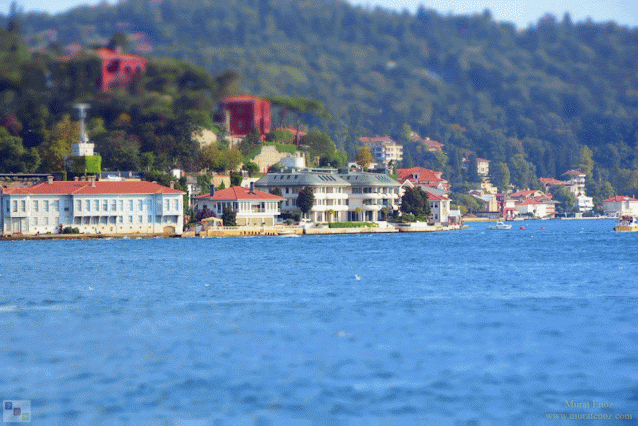

Complications rate of rhinoplasty is reported as 6 to 15 % and % 10 of primary rhinoplasty cases need to revision rhinoplasty operation (source: Revision Rhinoplasty
Editors: Daniel G. Becker,Stephen S. Park - Page 20).


Revision rhinoplasty performed to solve not only be cosmetic problems but functional problems may as well.
Many of secondary rhinoplasty patients have unnatural
looking nose with changed nasal anatomy.
Functional problems
after rhinoplasty
also exist in many of them.
The surgical goal of revision
rhinoplasty is to produce a nose that appears natural,
functional and is proportionate with the face.
The patient with "Polly Beak Deformity" seen in the photo
above, referred to us to solve dorsal nasal convexity. You can
see before and after photos about Polly Beak Deformity at the bottom of this page.
In the above two photographs, a nose shape that was sagged from the front, long and sagging appeared as a result of the nose tip sagging downward due to the loss of support tissue at the tip of the nose, which had previously undergone a nasal surgery in a clink abroad. Especially in noses with thick skin features, it is very important to protect the supporting cartilage tissue at the tip of the nose. Revision rhinoplasty was performed using rib cartilage and the supporting tissue of the nasal tip was reconstructed.
Some revision nose surgeries are more difficult than other revision nose job operations and may require more complicated procedures. Some revision nose aesthetic operations are more difficult due to the following reasons:
- nose with repetitive nasal operations and without adequate amount of cartilage
- exaggerated cartilage buildup due to repetitive nasal surgeries
- nose with excessive graft placement or exaggerated cartilage tissue changes
- thick skinned revision nose aesthetic
- cases of excessive healing, stitching reaction, scatris, hypertrophic scar or keloid formation
- those who have experienced serious nose trauma after a nasal aesthetic surgery
- patients with septum perforation, asymmetric resection of the alar cartilage, perforation of the nasal septum due to cocaine use after a nasal aesthetic surgery
This list is actually expandable, and in general, all revision rhinoplasty operations are more difficult than primary nasal aesthetics. Some of the revision nose aesthetic surgeries are the hardest ones 😉. Difficult revision rhinoplasty refers to a challenging surgical procedure performed to correct or improve the results of a previous nose surgery that presents complex issues. It may involve correcting severe deformities, extensive scar tissue, structural abnormalities, or multiple prior surgeries. Difficult revision rhinoplasty requires advanced surgical skills, experience, and meticulous planning to achieve optimal outcomes and patient satisfaction.
Three weeks after the operation of the revision rhinoplasty, you may continue your normal activities, provided that you do not perform sports and extreme activities. At the end of 30 days, even if you are going to be good enough to be out of surgery, you should be patient enough to get the full results. Over the next few months after the revision rhinoplasty operation, the scars become more pale and the swellings continue to descend. It is expected that the swelling in the nose bridge will descend faster than the nasal tip. If there is still numbness at the tip of the nose, it will pass completely through this period. If you have undergone a detailed nose revision, the healing process may last up to a year. Fully healing after the complicated revision nose surgery can last up to 2 years, varying from patient to patient. Since each body is different, the reactions against the behavior are not the same. So it is not expected that the healing period of each patient will be the same. It is not right to determine definitively the recovery process of the revision rhinoplasty operation, but it is important for you to have an idea of the experience of patients who have undergone this surgery before you.
It is not always possible to obtain complete symmetry after nasal aesthetic surgery in patients with asymmetry in the nasal cartilages.
The revision that is planned in patients with nasal aesthetic surgery and with asymmetrical areas in a different region of the nose or nose may require much more difficult and complicated procedures than nasal aesthetic operations.
Revision nasal aesthetic surgeries are sometimes not perfect but can be done for a much better result. This is because, in some patients, one of the cartilages that normally should be symmetrical or close to symmetry may be exposed to the thalamus or undergo severe deformation. It is not always possible to create the exact same of these cartilages. Otherwise, the curvilinear structure of the ear auricle cartilage or rib cartilage, which is normally not found in the nasal and non-nasal regions, may cause a curved appearance after revision nose surgery. Different cartilage cutting and shaping techniques (oblique incision or cartilage sewing ...).
For this reason, in order to obtain a successful result in revision nose surgery, it is necessary to plan and prepare the alternative approaches such as the evaluation of the existing problems very well, the ear and the rib cartilage which can be applied during the operation, and the surgeon who has surgery should have sufficient knowledge and experience for such interventions.
In the adjacent photo, rhinoplasty operations abroad already performed 2 times and serious nose tip asymmetry is seen.
Conversely, since it is not possible to cut out the skin, a thick skin image can be formed on the cartilage and the bone of the bone that is excessively scaled down. In thick skinned patients, it is necessary to protect the cartilaginous roof as different as possible from other patients. For this reason, patients are explained in detail in the reason why, when the revision surgery is requested for the further reduction of the nose, there is limited to do in the related issue. There are 3 basic components that need to be carefully examined that affect the end result of nasal aesthetic operations: "Cartilage structure, nasal bone and skin".
Cartilage and bone can make any kind of reduction, correction, insertion and shaping as we want on the roof, but the organ that we can not change only in these operations is "skin". The pre-op skin thickness of the patient will continue as that after the operation. Patients with thick skin should not expect thinning of the skin.
If you have already undergone a nasal aesthetic surgery and still have functional or aesthetic problems in your nose, revision nose aesthetics may need to be applied. The success of nose aesthetics is measured both by the physical appearance and the functional satisfaction of the person. If the shape of the nose is harmonious and natural, and if the person can breathe in a healthy way, then the aesthetic operation is successful. If these criteria are not met, the existing problems make the person more disturbed than their previous problems with aesthetic operation. Because he has come out of a rather troublesome operation, he has been patient throughout the healing process but has not reached the desired result. For this reason, revision nose aesthetics always have a very difficult process from the primary operation. In terms of practice, however, revision nose aesthetics do not differ from first nasal aesthetic surgery. Only the nose and skin are much more sensitive. Therefore, it is recommended that surgeons perform surveillance of the operation in the revision nose aesthetic.
Revision nose aesthetic operations are performed to patients who are not satisfied with previous nose surgery. The reasons for this dissatisfaction can be varied. In general, there are some situations that cause problems. Pre-operative surgeon - patient dialogue can not be fully established; the level of expertise of the surgeon is not sufficient to perform the current operation, or the variables are not included in the operation and the results are different from the desired ones. However, the results of the first operation require more expertise, experience and care as the revision affects the results of nasal aesthetics operations.
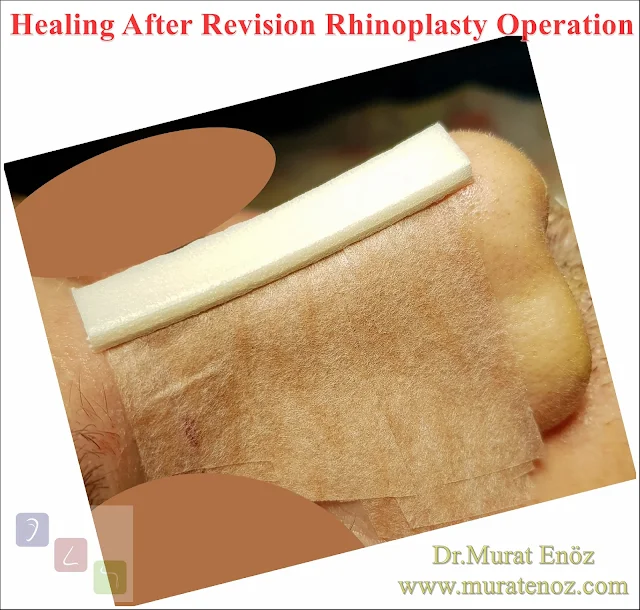
After the Revision rhinoplasty, the healing process varies depending on the patient's healing characteristics, the care of the patient and the amount of procedures performed.
Swelling and bruising after revision rhinoplasty is minimal in patients who only have a limited amount of treatment (eg nose type plasty + nasal hum removal). However, after the revision rhinoplasty operations, which require reconstruction of the nasal bone and reconstruction of the cartilaginous structure and insertion of additional cartilage grafts from the outside, the duration of bruising, sickness and healing may be longer.
The timing of complete removal of the tissue edema that may occur after complicated revision rhinoplasty operations is more complicated than the primary rhinoplasty operations. Patients must be patient in the process. In revision rhinoplasty operations, surgeons usually aim to terminate the procedure with as little tissue trauma as possible.
Revision nose surgery can sometimes be used as a "natural camouflage material" temporal muscle fascia graft in the presence of severe distraction, loss of volume or asymmetric light reflections on the nasal surface.
After 2-3 cm skin incision to the temple area, local anesthetic injection can be performed and the muscle membrane can be taken as a graft. Underneath the skin of the nose, "live tissue graft" and "camouflage material" to be placed in the removal of the nose roughness is successful. Sometimes cartilage graft or cartilage powder can be placed under the fascia graft. In patients receiving temporal muscle fascia graft, in addition to the nose bandage, a "pressured head bandage" is applied to the head area for a few days. In the above photo, the patient who underwent revision nose surgery 1 week ago has skin sutures in the temporal region. 1st week, these sutures are taken.
In the above picture, a male patient who had previously undergone rhinoplasty shows curved appearance and asymmetrical light reflection in the nose with a view from above. Revision rhinoplasty operation was performed to the patient using temporal fascia graft and rib cartilage. Right spreader graft, bilateral alar cartilage grafts, cap graft, marginal rib graft were used and a remporal fascia was laid in the nasal dorsum. The upper photo was taken after surgery and the lower photo was taken after the operation.
Although the ear pinna is softer and more elastic than nasal septum cartilage; in particular, nasal dorsum volume gain, nasal wing cartilage support, filling the nose dorsum and the upper part of the nasal septum can be used to prepare cartilage grafts. In providing the nasal tip support, rib cartilage grafts may be more suitable. Because the auricle cartilage are very soft and when nose tip supported by only the auricle conchal cartilage, t can be hanging over the time. It can be used in "revision rhinoplasty" operations, especially for severe tissue loss and augmentation rhinoplasty. In particular, in patients with alar collapses, grafts of curved auricle conchal cartilage can be used to support the alar cartilages lateral crura and nasal valve area.
You can find more information about "auricle cartilage grafting" at >> How to Cartilage Graft Taken From The Auricle and Post-Process Recommendations?
In recent years, due to the increase in the number of men to nasal aesthetic surgery and the increase in the frequency of male rhinoplasty operations in parallel with this, the operation of revision rhinoplasty has also been started frequently in males. In revision male rhinoplasty operations, the patient's ear-lobe cartilage, rib cartilage or cadaveric rib cartilage can be used. These surgeries require surgical anatomy experience and mastery.
Tertiary rhinoplasty operation is more difficult than
primary
rhinoplasty and
secondary rhinoplasty and complex and requires surgical
experience and
foresight.
I can recommend reading a nice article on the subject 😊 :
Nasal Tip Plasty: Delivery Approach Revisited - Chapter 1 - Issues
in Aesthetic, Craniofacial, Maxillofacial, Oral, and ... - Page 28
Pollybeak deformity is the emergence of a situation similar to the bird's beak appearance of the nose because of the fact that the "supratip section" just above the nose tip is ahead of the normal with /without droopy nose tip.Especially when viewed from the side, the appearance of the supratip nasal part is similar to that of the birds because it appears to be more or more ahead of the other parts of the nose.
 In general, Pollybeak Deformity can occur after a nasal surgery due to the following reasons:
In general, Pollybeak Deformity can occur after a nasal surgery due to the following reasons:
- Excessive removal of the nasal bone (excessive hum reduction)
- Insufficient excision of cartilage in the supratip region
- Loss of nasal support and associated supratip segment in front
(deformity which occurs due to the cartilaginous excess of the supratip region that resulting from the above 3 factors, is called cartilaginous pollybeak deformity)
- Excessive soft tissue or healing tissue development in the Supratip region
- Supratip skin is thick and swollen
(deformity which occurs due to the above two conditions is called soft-tissue pollybeak deformity).
You can find nose filler procedures for pollybeak deformity at >> Non-Surgical Nose Job For Pollybeak Deformity
As I always say, revision rhinoplasty operations are like opening a surprise box. Each patient is different and different procedures may be required for each patient. Almost all of the septum cartilages in the nose of the patient I shared with you above were surgically removed. A large amount of additional cartilage grafts may be required to rebuild the cartilage support tissue of the tip of the nose. Sometimes, instead of perfection, it can be aimed to achieve a more beautiful and healthier nose.
Nasal rasping is a common nasal aesthetic application. In cases where there is a lot of belts in the side, the front part of the nasal bone can be fully opened as the amount of bone tissue is increased. In this case called "Open Roof Deformity", when looking from the front, the tips of the sharp nasal bone can be recognized when the nose is flattened and spreading to the face, the skin areas lying in the nose or side view.
In the above photograph, there is a photograph of a patient with open roof deformity and apparent asymmetry at the tip of the nose after surgery in another hospital. In the distance between the eyes of the patient, the part between the two walls of the nasal bone shows an oblique and flat appearance, the fronts of which are noticeable from the front. The tip of the nose seems to be on a line near the right eyebrow instead of the midline. Nose belt rasping can also be done during nasal aesthetic and nasal lift operations.
To prevent the open roof deformity, the roof is re-closed in patients with excessive nasal bracing by applying the osteotomy to the nasal bone at the locations shown by the striped areas on the left side of the photo above.
As shown in the photo next, a small amount of asymmetric bone protrusions on the side of the nasal bone can be corrected with the closed technique after the incision made through the nose. However you need to add the following information:
A small amount of limited bone rasping can be made on the lateral parts of the nasal bone, and care can be taken not to dilute the side walls of the nasal bone too much. In the procedure, a tissue injury is the result, and instead of the small amount of tissue removed, a smaller amount of newly produced bone tissue may be produced. With current bone shaping techniques, ultrasonic device or microdrill assisted bone shaping methods, limited bone asymmetries can be corrected without breaking the bone. In patients with severe asymmetry of the nasal bone, unilateral limited nose bone rasping is not suitable and planned bone fracture "osteotomy" is more appropriate. Your doctor's opinion is the most valuable.
Revision rhinoplasties are like the opening of the surprise box and sometimes on surgery we can' t find enough cartilage to fixing deformities or functional problems. If I need to additional cartilage as the below >>
- cadaveric rib cartilage is about 1000- 1100 dollars
- your ear auricle or your rib cartilage graft (grafting surgery price is about 1000 Dollars) these additional prices can be added.
Revision rhinoplasty is a secondary or tertiary nose operation performed on previously operated noses that have aesthetic and functional problems. These operations are performed to improve the general appearance and function of the nose and to eliminate unsatisfactory results, complications or functional problems. Revision rhinoplasty operations may be planned due to anatomical problems such as curvature, asymmetry, collapse, sagging at the tip of the nose, collapse of the wing of the nose, functional problems such as nasal congestion or the resulting visual result not being as desired. In other words, it is the "revision" of the shape or functions of the nose. These operations are planned for patients due to health problems or aesthetic concerns. It is important to question the patient's selection and scientifically realistic expectations. Sometimes patients with psychiatric problems such as body dysmorphic disorder may apply to the surgeon with serious disappointments and unrealistic requests even in millimetric asymmetries.

In recent years, many successful complicated revision rhinoplasty operations have been performed in Turkey, especially in the city of Istanbul. Patients from all over the world come to Istanbul for quality healthcare and a successful revision nose job. There are also many quality hospital options where the operation is performed. These facilities usually have state-of-the-art equipment and an anesthesia team experienced in performing revision rhinoplasty procedures. Most surgeons in Istanbul have received extensive medical training and have gained a wealth of experience in rhinoplasty. One of the advantages of having revision rhinoplasty in Istanbul is that it is affordable compared to many other countries. Although it may not be the region with the cheapest rhinoplasty, it is quite advantageous in terms of the service provided for its price. The cost of healthcare services, including surgical procedures, in Turkey is generally lower than in many Western countries, while maintaining high quality and safety standards. This cost and the knowledge of successful operation results are an important factor that attracts international patients seeking revision rhinoplasty.
Not only in terms of healthcare but also in terms of cultural, historical and touristic richness, Istanbul offers a unique blend of modernity and rich cultural heritage, making it an attractive destination for medical tourists. Patients can enjoy discovering the city's historical sites, vibrant culture and various culinary experiences during their revision rhinoplasty journey. I have published a link to places in Istanbul that can be visited in just 1 week.
Dr. Murat Enöz's clinic achieved "The Health Tourism Authorization Certificate" . The certificate given here is given by the Republic of Turkey Ministry of Health to certain institutions that meet the conditions. You can see this certificate at >> We Earned "Health Tourism Authorization Certificate": Setting the Standard For Excellence
Communication is also important when undergoing revision rhinoplasty in a foreign country. Ensuring clear and effective communication with the surgeon, medical staff and support staff is vital to understanding the procedure, setting realistic expectations and addressing any concerns or questions throughout the process. Many medical facilities in Istanbul have English-speaking staff to facilitate effective communication with international patients.
Contrary to popular belief, revision rhinoplasty is a difficult operation. Changed anatomy and previous surgical procedures may make it difficult for the second surgeon to control the tissue during the operation. If the integrity of the nose is disrupted during the first operation, it may take a long time to correct this structure. Patients who have had previous rhinoplasty and have not received the expected results become psychologically worn out and restless. In order to get a positive result from revision surgery, it is extremely important to communicate with your doctor and trust your doctor's words. The patient who wants to have revision surgery also has a big responsibility here. The patient should fully explain the first operation of the revision surgery to his/her doctor and show everything to the doctor before the first operation and fully share everything with the doctor before and after the first operation. If the doctor who will perform the revision surgery is not the one who performed the first surgery, this information is very important for your doctor. Your nose should be in control of its physical structure before the surgery, which means that your revision surgery will take less time and your chances of success will increase. Therefore, you should communicate openly with your doctor with all your conscience.
Revision nose aesthetic surgery is classified as difficult operations for predictability
Revision nose surgery operations are performed to patients who are not satisfied with the results of previous nose surgery. The main reason for performing these operations is that the results of the previous nose surgery do not meet the expectations or include some medical problems as well as the problematic appearance. For example; Difficulty in breathing, having a collapse while breathing in the nose wing, mouth open sleep ... Even a first-time operation of a nasal aesthetic surgery for a patient is classified as difficult operations for predictability. The need to make separate planning for each patient prevents standardization of the process and prevents the results from being stable. In addition to these initial problems, revision nose aesthetics operations have an additional challenge as it requires the work against the results of the first operation.

Complications rate of rhinoplasty is reported as 6 to 15 % and % 10 of primary rhinoplasty cases need to revision rhinoplasty operation (source: Revision Rhinoplasty
Editors: Daniel G. Becker,Stephen S. Park - Page 20).

Sometimes, a secondary rhinoplasty may be required to correct a
minor deformity on the nose that occurs as a result of the
initial nose cosmetic surgery. All patients who have
crooked
nose or a
twisted nose or a
C-shaped nose and undergoing primary
rhinoplasty need advice that revision rhinoplasty may be
necessary either during or after the healing phase.


Secondary Rhinoplasty Challenges

Revision rhinoplasty performed to solve not only be cosmetic problems but functional problems may as well.
The
second
nose job procedure is usually performed by another surgeon
and nasal anatomy can be evaluated as a real only during surgery.
The cartilages and connective tissues in the nose may not be
enough in order to reshape the nose. Cartilages which
taken from the ribs or auricula may be needed. Surgical
experience and skills is very important in secondary rhinoplasty
surgeries. These problems can be much higher in tertiary
rhinoplasty operation.
About Nose Aesthetic Animation on Computer Before Revision Rhinoplasty Operation
Revision is the bone and cartilage structure and healing tissues that determine the shape of the nose after rhinoplasty surgeries. Especially in patients who have had 3 or more nose surgeries, even surgery alone is a "surprise box opening"; it is impossible for computerized rhinoplasty animation to show the full result after surgery! In revision rhinoplasty surgeries, rhinoplasty animation can be useful in obtaining information about the patient's expectations and in patients with high expectations, whether the physician accepts the surgery or not. Due to exaggerated fibrosis, suture reactions, healing tissues and thick skin structure characteristics, anatomical revision of the nasal cartilage, even tissue dissection, is quite difficult. The aim of revision rhinoplasty surgeries is to perform the least possible surgical trauma and avoid surgical risks. Remember that there are tissue changes after repeated rhinoplasty surgeries, the operation becomes increasingly difficult and the rhinoplasty animation will not reflect the result. The surgeon's experience and knowledge can minimize tissue trauma, but after all, this surgery is performed on a "tissue with modified anatomy".
Computerized rhinoplasty animation refers to the use of digital tools and software to simulate and visualize possible changes in the appearance of the nose during the rhinoplasty procedure. This technique allows patients and surgeons to better understand the expected results before going into surgery.
Although computerized rhinoplasty animation is very useful in understanding what patients expect from the surgery and showing possible surgical results, some surgeons do not perform rhinoplasty animations before revision rhinoplasty surgeries because it can lead to unrealistic patient expectations.
While animation can often be done in seconds, revision rhinoplasty surgery often requires hours. Even tissue dissection alone is often difficult.
With rhinoplasty animation, the patient and surgeon can interactively examine various options and visualize how different changes to the nose will affect the overall facial harmony and aesthetic outcome. The software can show the nose from different angles and perspectives, allowing the patient to get a comprehensive view of the proposed changes. Avoid relying on animations as much as possible before revision rhinoplasty and consider whether the realistic results your doctor offers you are acceptable to you.
Why Some Revision Rhinoplasty Operations Are More Difficult Than Others?
 |
| In the photo above, there are nasal images of the patient who underwent rhinoplasty 6 times in different clinics. Dense fibrotic structure, asymmetric reflections, scar area in the columella are seen. |
Some revision nose surgeries are more difficult than other revision nose job operations and may require more complicated procedures. Some revision nose aesthetic operations are more difficult due to the following reasons:
- nose with repetitive nasal operations and without adequate amount of cartilage
- exaggerated cartilage buildup due to repetitive nasal surgeries
- nose with excessive graft placement or exaggerated cartilage tissue changes
- thick skinned revision nose aesthetic
- cases of excessive healing, stitching reaction, scatris, hypertrophic scar or keloid formation
- those who have experienced serious nose trauma after a nasal aesthetic surgery
- patients with septum perforation, asymmetric resection of the alar cartilage, perforation of the nasal septum due to cocaine use after a nasal aesthetic surgery
This list is actually expandable, and in general, all revision rhinoplasty operations are more difficult than primary nasal aesthetics. Some of the revision nose aesthetic surgeries are the hardest ones 😉. Difficult revision rhinoplasty refers to a challenging surgical procedure performed to correct or improve the results of a previous nose surgery that presents complex issues. It may involve correcting severe deformities, extensive scar tissue, structural abnormalities, or multiple prior surgeries. Difficult revision rhinoplasty requires advanced surgical skills, experience, and meticulous planning to achieve optimal outcomes and patient satisfaction.
Healing Process of Revision Rhinoplasty
It would be useful to have a little patience to complete the healing after the revision rhinoplasty operation. This may be due to recurrent tissue trauma, the presence of prior surrogate tissue swabs, difficulty in handling, and contact of the subcutaneous tissue with air during surgery, additional graft applications.Three weeks after the operation of the revision rhinoplasty, you may continue your normal activities, provided that you do not perform sports and extreme activities. At the end of 30 days, even if you are going to be good enough to be out of surgery, you should be patient enough to get the full results. Over the next few months after the revision rhinoplasty operation, the scars become more pale and the swellings continue to descend. It is expected that the swelling in the nose bridge will descend faster than the nasal tip. If there is still numbness at the tip of the nose, it will pass completely through this period. If you have undergone a detailed nose revision, the healing process may last up to a year. Fully healing after the complicated revision nose surgery can last up to 2 years, varying from patient to patient. Since each body is different, the reactions against the behavior are not the same. So it is not expected that the healing period of each patient will be the same. It is not right to determine definitively the recovery process of the revision rhinoplasty operation, but it is important for you to have an idea of the experience of patients who have undergone this surgery before you.
It is not always possible to obtain complete symmetry after nasal aesthetic surgery in patients with asymmetry in the nasal cartilages.
The healing process of revision rhinoplasty, which refers to a secondary nose surgery performed to address cosmetic or functional concerns after a previous rhinoplasty, can vary depending on the specific case and the extent of the revision. While every patient's healing timeline may be different, here is a general overview of what to expect during the healing process:
1. Immediate Post-Operative Phase: After revision rhinoplasty, patients will typically experience swelling, bruising, and some discomfort around the nose and possibly the surrounding areas such as the eyes and cheeks. Nasal packing or splints may be placed to provide support and protect the newly operated structures. Pain medication and antibiotics may be prescribed to manage pain and reduce the risk of infection.
2. Swelling and Bruising: Swelling is a normal part of the healing process and can be more pronounced in revision rhinoplasty due to the presence of scar tissue and previous surgical alterations. The swelling may be more extensive during the initial days following the surgery and gradually subside over several weeks. Bruising around the eyes may also occur but typically resolves within a couple of weeks.
3. Nasal Splints and Dressings: Nasal splints or internal packing may be used to maintain the shape and support the newly reconstructed nasal structures. These splints and dressings are usually removed within the first week or two, depending on the surgeon's recommendations. Their removal may bring temporary relief and improved breathing.
4. Breathing and Congestion: It is common to experience nasal congestion and difficulty breathing through the nose during the early stages of healing. This can be a result of swelling, splints, or internal changes made during the revision rhinoplasty. It may take several weeks or even months for breathing to improve as the nasal passages heal and the swelling subsides.
5. Stitches and Incision Sites: If external incisions were made during the revision rhinoplasty, stitches or sutures may be present. These stitches are typically removed within a week or two, depending on the surgeon's instructions. Internal dissolvable sutures may also be used, which do not require removal.
6. Scar Healing: Scar healing is an ongoing process that can take several months or longer. The incision sites from the revision rhinoplasty will gradually fade and become less noticeable over time. Following the surgeon's instructions regarding scar care, such as avoiding sun exposure and using scar creams or ointments, can help optimize the healing and minimize scar visibility.
7. Long-Term Results: The final results of revision rhinoplasty may not be fully apparent for several months or even up to a year after the surgery. It takes time for the nasal tissues to settle, swelling to completely subside, and the scars to mature. Patience is key during this period, and it is important to follow up with the surgeon for regular check-ups to monitor the healing progress.
It's essential to note that individual healing experiences can vary, and it is crucial to follow the post-operative care instructions provided by the surgeon. By following these instructions, attending follow-up appointments, and maintaining open communication with the surgeon, patients can optimize their healing process and achieve the best possible outcomes from their revision rhinoplasty.
The revision that is planned in patients with nasal aesthetic surgery and with asymmetrical areas in a different region of the nose or nose may require much more difficult and complicated procedures than nasal aesthetic operations.
Revision nasal aesthetic surgeries are sometimes not perfect but can be done for a much better result. This is because, in some patients, one of the cartilages that normally should be symmetrical or close to symmetry may be exposed to the thalamus or undergo severe deformation. It is not always possible to create the exact same of these cartilages. Otherwise, the curvilinear structure of the ear auricle cartilage or rib cartilage, which is normally not found in the nasal and non-nasal regions, may cause a curved appearance after revision nose surgery. Different cartilage cutting and shaping techniques (oblique incision or cartilage sewing ...).
Asymmetric Edema After Revision Rhinoplasty Surgery
Especially in patients with asymmetric nasal shape, unilateral cartilage graft applications, unilateral bone forming and unilateral tissue dissection may be required during surgery. In other words, asymmetric edema due to asymmetric surgical trauma is normal. Tissue edema is eliminated longer than primary rhinoplasty operations. Sometimes, this asymmetric appearance can be reduced for months. In simple revision nose surgery, only a limited amount of cartilage grafting or stitching and camouflage techniques are associated with less edema after revision rhinoplasty.How To Get A Successful Result in Revision Rhinoplasty Operation
Revision nose surgeries are interventions that involve major difficulties with surgery, due to problems seen in tissue planes due to previous surgery, adhesions between the skin and cartilage or bone roof, and damage and deformities caused by cartilage or bone tissue.For this reason, in order to obtain a successful result in revision nose surgery, it is necessary to plan and prepare the alternative approaches such as the evaluation of the existing problems very well, the ear and the rib cartilage which can be applied during the operation, and the surgeon who has surgery should have sufficient knowledge and experience for such interventions.
In the adjacent photo, rhinoplasty operations abroad already performed 2 times and serious nose tip asymmetry is seen.
Revision Nose Aesthetic Challenges in Thick Skin Patients
Patients with thick skin often come with requests to reduce their noses very much because they are very much alienated from large, thick nose tips. In such noses, if the skin is too thick to be reduced in size too much, the result will never be as desired.Conversely, since it is not possible to cut out the skin, a thick skin image can be formed on the cartilage and the bone of the bone that is excessively scaled down. In thick skinned patients, it is necessary to protect the cartilaginous roof as different as possible from other patients. For this reason, patients are explained in detail in the reason why, when the revision surgery is requested for the further reduction of the nose, there is limited to do in the related issue. There are 3 basic components that need to be carefully examined that affect the end result of nasal aesthetic operations: "Cartilage structure, nasal bone and skin".
Cartilage and bone can make any kind of reduction, correction, insertion and shaping as we want on the roof, but the organ that we can not change only in these operations is "skin". The pre-op skin thickness of the patient will continue as that after the operation. Patients with thick skin should not expect thinning of the skin.
How is the Approach Applied If There Is Not Enough Cartilage Tissue In The Nose During Revision Nose Aesthetic Operations?
During the revision rhinoplasty operation, it may be necessary to add cartilage tissue to some parts of the nose, which cartilage is usually taken from the nose, the ear or the ribs. If the cartilage is inadequate, the cartilages obtained using artificial materials are shaped or injected. In revision nose surgery, almost all cartilage is needed to be structured with nasal reconstruction. Since cartilage is used for the nose at the first operation, cartilage can be taken from other places. Taking cartilage from ear pinna is not a problem at all. It only lasts a day for ear wrapping. If it can not be picked up from the pinna, rib cartilage grafting is preffered. Cartilage can be obtained from cadavers or some synthetic products if patients do not want their cartilage to be touched. But this preference can also bring about situations such as infection or the body not accepting tissue. For that reason, except in some special cases, doctors prefer to use the patient's own cartilage. Similar article about this subject >> Why Surgeons Need Cartilage Grafts From Rib Or Pinna in Revision Rhinoplasty Operations?Rib Cartilage Grafting and Harvesting
Rib cartilage is the tissue with ideal properties for nasal reconstruction, especially in noses where there is no adequate and usable cartilage insert. Since it is inclined and can be bent afterwards, oblique incision techniques have been developed and the harvesting method has been defined. The rib cartilage is usually removed from the medial part of the ribs in the lower part of the rib cage after general anesthesia is given.
As seen in these photographs, a less visible and concealed incision scar can be achieved when a rib graft incision is made just below the breast. Although using your own rib is safer than using a cadaver's rib, the disadvantages of rib cartilage grafting can be listed as follows:
- severe pain that can be felt for months after the incision and increases with certain movements may occur
- when excising the rib cartilage, there is a risk of injury to the pleura and lung injury (never seen before)
- after the age of 40, calcification may begin in the rib cartilages and the risk of encountering ossified ribs increases (you can have a look at this link >> Premature Calcifications of Costal Cartilages: A Different Problem For Revision Rhinoplasty Operations)
- During the procedure, it is necessary to prepare the grafts by cutting the rib cartilages obliquely and looking outside a little before placing them in the nose. There may be spontaneous bending or twisting.
How Long Should Revision Be Waited for Nose Aesthetic Operation?
Revision nose aesthetics, nose aesthetics have passed before, but still functional and aesthetic problems are made in case of continuing. How long can these surgeries be done in the first place?If you have already undergone a nasal aesthetic surgery and still have functional or aesthetic problems in your nose, revision nose aesthetics may need to be applied. The success of nose aesthetics is measured both by the physical appearance and the functional satisfaction of the person. If the shape of the nose is harmonious and natural, and if the person can breathe in a healthy way, then the aesthetic operation is successful. If these criteria are not met, the existing problems make the person more disturbed than their previous problems with aesthetic operation. Because he has come out of a rather troublesome operation, he has been patient throughout the healing process but has not reached the desired result. For this reason, revision nose aesthetics always have a very difficult process from the primary operation. In terms of practice, however, revision nose aesthetics do not differ from first nasal aesthetic surgery. Only the nose and skin are much more sensitive. Therefore, it is recommended that surgeons perform surveillance of the operation in the revision nose aesthetic.
How Much Time Past For Revision Rhinoplasty Surgery?
It is advisable to wait an average of 6 months to 1 year for the improvement of the nose during revision nose aesthetics. Because even if the nose starts to appear in its new form from the first light, more time is needed to pass the edema and sensitivity. In order to earn the full function of the nose it must pass an oath. In the meantime, some problems that bother you can go away spontaneously. For revision aesthetic surgery, the nose skin, bone and cartilage tissue needs to heal. If there are simple problems that can be corrected by very small interventions, this period can be even shorter.Which Doctor Should Be Visited During The Second Or Third Nasal Aesthetic Surgery?
Especially in the field of revision rhinoplasty, knowledgeable and experienced physicians should be careful to choose. If your first nasal aesthetic surgery does not have a healing problem in your tissues, you should use your choice in the direction of the doctor who made your first surgery. Your physician knows the interventions of the internal and external structures of the nose after the first operation. Revision rhinoplasty may also be more successful in this respect. If you need to choose another surgeon, you should pay particular attention to being an expert in revision nose aestheticsPatience for Revision Rhinoplasty Operation
Whether or not they have surgery or not, they often ask and what they want to learn is whether a second operation is the question. Does the person have the possibility of performing a second operation or a revision rhinoplasty? The answer to the question is yes, but after the first nose surgery, a second operation can be performed after a sufficient time. Considering the scientific studies done in the world and the ratios of all nasal aesthetics, second surgery or revision may be required between 8-10% after nasal aesthetic operations. The appropriate time for the second operation is one year after the first operation. Because after the nose surgery, the purpose of the waiting period is that the conditions that seem to be negative in the first months after the operation may improve over time. The person should not be rushing, should be patient for about a year, and decide for a surgery a year later. This expectation can also prevent an unnecessary 2nd surgery.Who Need To Revision Nose Aesthetics?
Revision nose aesthetic operations are performed to patients who are not satisfied with previous nose surgery. The reasons for this dissatisfaction can be varied. In general, there are some situations that cause problems. Pre-operative surgeon - patient dialogue can not be fully established; the level of expertise of the surgeon is not sufficient to perform the current operation, or the variables are not included in the operation and the results are different from the desired ones. However, the results of the first operation require more expertise, experience and care as the revision affects the results of nasal aesthetics operations.
How Can Be Revision Nose Aesthetics Performed?
Revision nose surgery starts with a serious planning phase before surgery. Examining the facial structure of the patient, determining the ideal nose rate, the other causes of the failure of the operation to find and correct the planning phase of the planning phase; patient psychology and correction of patient psychology. Cartilage can also be taken from the rib or ear when necessary. Generally, under general anesthesia, the operation is carried out in the planned rates and shape before the nose is reshaped. The fact that the operation should be taken into consideration is the possibility of the occurrence of unforeseen situations caused by the previous operation and the first observation. Since a second failed rhinoplasty operation is not easy to remove patient psychology, revision nose aesthetics operations should be performed by specialist surgeons. In the process following the operation, the control period of about one year will give a clearer idea to understand how serious the operation is. Swelling and bruises after the operation decrease in days. Revision nose surgery is a serious and difficult operation. In addition to the inherent difficulties in nose aesthetic operations, the purpose of the operation is to correct the results of the first and unsuccessful nasal aesthetic surgery. These difficulties, combined elements that should be considered are increasing both the patient and the physician.Healing After Revision Rhinoplasty Operation

After the Revision rhinoplasty, the healing process varies depending on the patient's healing characteristics, the care of the patient and the amount of procedures performed.
Swelling and bruising after revision rhinoplasty is minimal in patients who only have a limited amount of treatment (eg nose type plasty + nasal hum removal). However, after the revision rhinoplasty operations, which require reconstruction of the nasal bone and reconstruction of the cartilaginous structure and insertion of additional cartilage grafts from the outside, the duration of bruising, sickness and healing may be longer.
The timing of complete removal of the tissue edema that may occur after complicated revision rhinoplasty operations is more complicated than the primary rhinoplasty operations. Patients must be patient in the process. In revision rhinoplasty operations, surgeons usually aim to terminate the procedure with as little tissue trauma as possible.
Operation Time of Revision Rhinoplasties Are Different!
The characteristics of revision nose surgery can be different. Some of these operations last for 30 minutes, minor touches and problems are removed from the center of minor surgery. In addition, revision nose surgeries are also available, which we have reshaped the nose with extra cartilages taken from the ear or the ribs for 5 to 6 hours, with major revisions.Temporal Muscle Fascia Graft: "Natural and Alive Camouflage Material For Revision Rhinoplasty"
 |
| Temporal Muscle Fascia Graft |
Revision nose surgery can sometimes be used as a "natural camouflage material" temporal muscle fascia graft in the presence of severe distraction, loss of volume or asymmetric light reflections on the nasal surface.
 |
| Temporal Muscle Fascia Grafting Temporal muscle fascia grafting is a surgical technique used in facial plastic surgery, particularly in rhinoplasty procedures. It involves taking a thin layer of tissue from the patient's temporal muscle fascia, which is located in the temple area, and using it as a graft to augment or support various areas of the nose. The harvested temporal muscle fascia graft is typically used to reinforce the nasal tip, provide structural support, or enhance the contour of the nasal bridge. It can be particularly useful in cases where additional strength or volume is needed, or when cartilage grafts alone may not be sufficient. Temporal muscle fascia grafting offers several advantages, including a good supply of autologous tissue, minimal donor site morbidity, and the ability to shape and tailor the graft to meet specific needs. This technique can help achieve improved aesthetic results and long-lasting outcomes in rhinoplasty procedures. |
After 2-3 cm skin incision to the temple area, local anesthetic injection can be performed and the muscle membrane can be taken as a graft. Underneath the skin of the nose, "live tissue graft" and "camouflage material" to be placed in the removal of the nose roughness is successful. Sometimes cartilage graft or cartilage powder can be placed under the fascia graft. In patients receiving temporal muscle fascia graft, in addition to the nose bandage, a "pressured head bandage" is applied to the head area for a few days. In the above photo, the patient who underwent revision nose surgery 1 week ago has skin sutures in the temporal region. 1st week, these sutures are taken.
In the above picture, a male patient who had previously undergone rhinoplasty shows curved appearance and asymmetrical light reflection in the nose with a view from above. Revision rhinoplasty operation was performed to the patient using temporal fascia graft and rib cartilage. Right spreader graft, bilateral alar cartilage grafts, cap graft, marginal rib graft were used and a remporal fascia was laid in the nasal dorsum. The upper photo was taken after surgery and the lower photo was taken after the operation.
Auricular Cartilage (Pinna Cartilage) Graft in Revision Rhinoplasty Operations
 |
| In the photo above, the incision and wound healing in the incision area are seen 1 week after the graft removal from the auricle. Since the cartilages responsible for the shape and curves of the auricle are not touched, no shape changes occur. |
Although the ear pinna is softer and more elastic than nasal septum cartilage; in particular, nasal dorsum volume gain, nasal wing cartilage support, filling the nose dorsum and the upper part of the nasal septum can be used to prepare cartilage grafts. In providing the nasal tip support, rib cartilage grafts may be more suitable. Because the auricle cartilage are very soft and when nose tip supported by only the auricle conchal cartilage, t can be hanging over the time. It can be used in "revision rhinoplasty" operations, especially for severe tissue loss and augmentation rhinoplasty. In particular, in patients with alar collapses, grafts of curved auricle conchal cartilage can be used to support the alar cartilages lateral crura and nasal valve area.
You can find more information about "auricle cartilage grafting" at >> How to Cartilage Graft Taken From The Auricle and Post-Process Recommendations?
Revision Rhinoplasty Using Rib Cartilage
Autologous costal cartilage grafts can be used for revision
rhinoplasty procedures or surgical treatment of nasal
deformities. Some surgeons believe that rib grafts should be
used only for nasal augmentation and reconstruction. However,
rib grafts has advantages and disadvantages.
Two methods can be used to harvest
rib cartilage. In the first method, the cartilage was
harvested with the perichondrium, in second method, a
longitudinal incision was made through the perichondrium, and a
subperichondrial dissection was performed.
There are some surgical morbidities of costal
cartilage grafting techniques including graft resorption,
postoperative infection, visible graft contour, fracture due to
trauma, warping, seroma, pneumothorax, keloid formation, and
persistent pain at the donor site (Source: "Outcomes
Following Rhinoplasty Using Autologous Costal Cartilage").
Some surgeons prefer to irradiated homologous
rib cartilage grafts because of these risks.
Central segment harvest of costal cartilage is used to
augmentation of the nasal dorsum in patient seen on the photo
above.




It is not always possible to obtain a complete millimetric symmetrical result with revision rhinoplasty in noses that are asymmetrical at this degree and whose entire anatomy has been changed. Scientifically, a more natural, more aesthetic and more functional nose should be obtained.
Tertiary Revision Rhinoplasty With Using Cadaveric Rib Cartilage
We performed tertiary rhinoplasty operation using a cadaveric rib cartilage to the patient with irregular, asymmetric nose. You can see the before and after on the below.
Revision Rhinoplasty With Using Rib Cartilage in Male
You can see in the preoperative photos and videos that, right sided pinch deformity, nose tip asymmety, droopy nose tip. A patient with a fairly fibrotic skin structure (due to recurrent surgical trauma and suture reactions) performed a third revision rhinoplasty operation using rib cartilage. As can be seen in Postoperative photos, it can be seen that the light line on the nose comes to the middle line, the asymmetric collapsing area on the right nasal wing improves, and symmetry is provided at the tip of the nose. In recurrent revision nose surgery, it is not always possible to achieve full symmetry with a single operation. Achieving the maximal symmetrical and functional nose, minimal surgical trauma are the main goal.




Complicated 3rd Revision Rhnoplasty For Scoliotic Nose Deformity With Rib Cartilage and Temporalis Fascia
The patient, who had previously undergone two rhinoplasty operations in another country, applied to our clinic because he was not satisfied with the shape of the nose and had nasal congestion. The following features were found in the examination of the patient:
- scoliotic light reflection (asymmetry in all areas of the nose)
- left alar collapse
septum deviation in the nose
- thick and oily skin features
- hanging columella
asymmetry in the nostrils
- asymmetrical indentations and protrusions on the supratip area, nasal tip and nasal bone, especially noticeable on palpation.
We planned to perform an open technique 3rd revision nose job using the cartilage and temporalis fascia graft to the patient, and the following procedures were performed with the help of a micromotor:
- bilateral internal osteotomy
- bilateral marginal rim graft
- bilateral spreader graft
- septoplasty and total septal reconstruction (L strut reconstructed)
- columellar strut graft
- cap graft
- straightening the asymmetrical areas of the nasal bone with the help of micromotor
- left alar batten graft
- dorsal augmentation with temporalis fascia
- Replacement of dome sitche and dome points to alar cartilages
In order to roughen the nasal dorsum of the patient and augmentation of the nasal dorsum, the fascia of the temporalis muscle, 2x2 cm in size, in the left temple area was removed as seen in the photo. It is a natural patient's body tissue that can be used as a natural camouflage and filling material, and maybe very important in revision rhinoplasty.
In the post-operative photographs of the patient, especially the nasal back and nasal root appear slightly edematous.
Open Technique Revision Rhinoplasty Operation
Previous Closed Rhinoplasty Failure: Droopy and Twisted Nose
The patient whose photos and videos I shared below had a closed technique rhinoplasty operation in a clinic in Iran 1 year ago. According to the patient's statement, complaints such as drooping down and to the right at the tip of the nose, deformation in the shape of the nose, and nasal congestion emerged over time. In the examination of the patient, caudal septum dislocation protruding into the nose, left nasal valve collapse, and different asymmetries on the nose were detected. The patient underwent open technique, ultrasonic device and micromotor assisted rhinoplasty. The patient underwent rim graft on the right nasal wing, replacement of alar dome points with sutures, caudal septoplasty, placement of left battern graft and right spreader graft, reconstruction of the caudal septum with tongue in groove technique, bilateral osteotomy with ultrasonic device, and flattening of the nasal bridge with micromotor. The "overlapping technique" was also used to eliminate the severe asymmetry between the outer and inner legs of the alar cartilage on the patient's nose wings. The patient has a partial polly beak nose deformity, a twisted nose, and a prominent hanging columella on the right side.
3rd Revision Rhinoplasty Operation
A female patient who had undergone rhinoplasty surgery twice at a different clinic applied because of the emergence of different asymmetric areas on the nose and asymmetry in the nostrils. We planned an open technique tertiary revision rhinoplasty operation for the patient. The patient underwent an operation using rib cartilage with the help of a micromotor and ultrasonic device. The old irregular scar area on the tip of the nose, on the columella, was also excised. You can find before and after images of the nose in the video and photos.
Complicated 3rd Revision Rhinoplasty - Tertiary Revision Nose Job With Using Cadaveric Rib Cartilage With Temporalis Fascia
We performed tertiary revision rhinoplasty using rib cartilage and temporal fascia on the patient, who had undergone rhinoplasty twice in another clinic abroad and developed right nasal collapse and deviated nose deformity.
Micromotor Asisted Tertiary Revision Rhinoplasty For Thick Skinned Nose
The patient, who previously had two rhinoplasty operations in a different country, applied to our clinic because he was not satisfied with the shape of the nose. The following features were found in the examination of the patient:
- thick and oily skin features
- a mild, severe polly beak deformity, due to the anterior supratip area
- drooping and low nasal tip
- depressions and scars on both nose wing crannies
- asymmetry in the nostrils
- slight asymmetrical protrusion on the right side of the nasal bone
- wide nose features
We planned to perform an open technique 3rd revision nose job operation on the patient and the following operations were performed using a micromotor:
- bilateral internal osteotomy
- left marginal rim graft
- columellar strut graft
- cap graft
- straightening the asymmetrical areas of the nasal bone with the help of micromotor
- resection of the scar tissue in the outer alar wings with the skin
- reduction of supratip cartilages with the help of micromotor
- replacement of dom sitche and dome points to alar cartilages
In the post-operative photographs of the patient, especially the nasal back and nasal root appear slightly edematous.
Ethnic Asian Secondary Rhinoplasty With Micromotor System and Temporal Fascia
The patient, who had previously undergone ethnic augmentation rhinoplasty operation using fresh rib cartilage in a different country, applied to our clinic with the complaints of a change in nose shape, prominent nasal arch, asymmetry on the ridge and tip of the nose a few weeks after the operation. As a result of the examination of the patient
- dislocated rib cartilage
- curved rib cartilage
- asymmetry in the nasal tip and supratip region
- deep nasal root
- features thick nose skin
detected.
The temporal fascia was removed from the left temporal region of the patient, the asymmetrical areas on the nose were marked with a dental injector tip from the outside of the skin, and these foreheads were smoothed with a micromotor by lifting the nasal skin. Different cartilage grafts were placed on the tip of the nose and the wings of the nose. Alar base resection was performed on the left side. When fresh rib cartilages are used as blocks, there may be subsequent bending and warping. For this reason, split thickness incision technique is used to reduce the risk of bending afterwards. The nasal root of the patient was augmented with temporl fascia. You can find the images of the patient before and after the operation below:
One week after asian revision nose job surgery:
Revision Rhinoplasty With Using Cadaveric Rib Cartilage Video
Irradiated Cadaver Rib Cartilage
 |
| Irradiated Cadaver Rib Cartilage |
The "Irradiated Cadaver Rib Cartilage" revision is used in revision nose aesthetic surgeries for the following reasons:
- to provide cartilage in desired sizes
- removal of the operation time
- relieving the patient from the extra painful graft retrieval process
- less exposure of the patient to anesthesia
- ease of operation without preparing a surgical cartilage graft during surgery
- removal of the operation time
- relieving the patient from the extra painful graft retrieval process
- less exposure of the patient to anesthesia
- ease of operation without preparing a surgical cartilage graft during surgery
Irradiated homologous rib cartilage is well tolerated and safe for use in rhinoplasty operation. You can read details at >> Rib Cartilage Safe for Rhinoplasty
Despite the advantages above, we do a procedure to remove cartilage grafts from own ribs or ear pinnas in patients who do not want to use foreign tissue.
You can see details about this video at >> Revision Rhinoplasty With Cadaveric Rib Cartilage in Istanbul
4th Revision Rhinoplasty Using Rib Cartilage
In the above and below photos, nasal images of the patient who had been previously performed 3 different rhinoplasty operations in different clinics, grafting both auricles and ribs on the left side are seen. 4 th revision rhinoplasty was performed to the patient by using rib cartilage. Although many problems on the nose have been resolved; you can still see some asymmetric areas at the tip of the nose. In this way, there are many risks in the recurrent rhinoplasty operations such as inadequate graft area, intense fibrosing and difficult tissue dissection, and the emergence of feeding problem in cartilage grafts.
It is not always possible to provide complete symmetry in the noses that have emerged with so many tissue changes. The effort to perform major surgery can result in major complications!
4. Revision Nose Aesthetics - Rib Cartilage + Micromotor Used
We performed a 4th revision nose job operation using micromotor and rib cartilage on the patient who had previously had 3 nasal aesthetic operations in different clinics. Different cartilage grafts were applied to the patient with very thick skin and asymmetrical nasal tip, and the nostrils were made more symmetrical. Both sides of the nasal bone were shaved with the micromotor system.
Thick Skinned Male Nose - 4th Revision Rhinoplasty
The patient in the image above had previously undergone rhinoplasty surgery 3 times in different clinics. The patient applied because of the scar on the tip of the nose and the asymmetrical nostrils, with the tip of the nose turned to the right. We performed an open technique revision rhinoplasty surgery on the patient. As seen here, a much more symmetrical nose was obtained than the previous nose. In this way, the recovery period can be a bit longer in patients with very thick skin characteristics who undergo revision rhinoplasty. For this reason, we try to complete the procedure with the least possible surgical trauma.
Revision Rhinoplasty With Using Cadaveric Rib Cartilage In Men Istanbul
In recent years, due to the increase in the number of men to nasal aesthetic surgery and the increase in the frequency of male rhinoplasty operations in parallel with this, the operation of revision rhinoplasty has also been started frequently in males. In revision male rhinoplasty operations, the patient's ear-lobe cartilage, rib cartilage or cadaveric rib cartilage can be used. These surgeries require surgical anatomy experience and mastery.
Revision Rhinoplasty With Using Cadaveric Rib Cartilage In Women Istanbul
In female patients, during the revision rhinoplasty operation, additional cartilaginous tissue is needed if there is not enough cartilage tissue in the nose. When the patient is not preferred to grafting from own's pinna or own's rib , the irradiated cadaver can be used.
In the photographs below, you can find photographs of pre-operative and tertiary revision rhinoplasty operations of a patient who had undergone rhinoplasty twice in the past and who had nose filler application after a curve nose deformity. Although the nasal filler is aspirated during the operation; The nose filler caused many asymmetries in this place to be hidden by camouflaging in pre-operative photographs.
Revision Rhinoplasty With Pediatric Vacular Graft
Pediatric vascular grafts can be used to fill nasal dorsum in revision rhinoplasties. You can see before and after photos for revision rhinoplasty with using pediatric vascular grafts on the below:
Tertiary Rhinoplasty Operation
Tertiary rhinoplasty is a surgical procedure to correct cosmetic and functional problems of the nose that have been developed or recurring after prior unsuccessful surgeries. This surgical procedure sometimes requires complicated manipulations and tissue grafting for proper restoration.
Tertiary rhinoplasty is a surgical procedure to correct cosmetic and functional problems of the nose that have been developed or recurring after prior unsuccessful surgeries. This surgical procedure sometimes requires complicated manipulations and tissue grafting for proper restoration.
Pollybeak Deformity
Pollybeak Deformity Definition
Pollybeak deformity is the emergence of a situation similar to the bird's beak appearance of the nose because of the fact that the "supratip section" just above the nose tip is ahead of the normal with /without droopy nose tip.Especially when viewed from the side, the appearance of the supratip nasal part is similar to that of the birds because it appears to be more or more ahead of the other parts of the nose.
Causes of Pollybeak Deformity
 In general, Pollybeak Deformity can occur after a nasal surgery due to the following reasons:
In general, Pollybeak Deformity can occur after a nasal surgery due to the following reasons:- Excessive removal of the nasal bone (excessive hum reduction)
- Insufficient excision of cartilage in the supratip region
- Loss of nasal support and associated supratip segment in front
(deformity which occurs due to the cartilaginous excess of the supratip region that resulting from the above 3 factors, is called cartilaginous pollybeak deformity)
- Excessive soft tissue or healing tissue development in the Supratip region
- Supratip skin is thick and swollen
(deformity which occurs due to the above two conditions is called soft-tissue pollybeak deformity).
Treatment of Pollybeak Deformity
You can find nose filler procedures for pollybeak deformity at >> Non-Surgical Nose Job For Pollybeak Deformity
3.rd Revision Rhinoplasty Operation For Polly Beak Deformity in Men
Patient who had nose rhinoplasty 2 times before and had reflexive light reflections on the nose. Pollybeak deformity and C shaped nose deformity are present. A tertiary revision nose surgery was performed by using cadaveric rib cartilage.
3rd revision rhinoplasty for treatment of Pollybeak Deformity
In the following two photos, two previous rhinoplasty operations were performed and the resulting pollybeak deformity was seen. An open technique tertiary revision rhinoplasty operation was performed and the natural (masculine) appearance of the nose was obtained.
 |
| 3rd revision rhinoplasty for treatment of Pollybeak Deformity |
 |
| 3rd revision rhinoplasty for treatment of Pollybeak Deformity |
3rd Revision Nose Job With Cadaveric Rib Cartilage
In the video above and in the photographs below, the photos taken before and after the 3rd revision rhinoplasty operation are seen of the patient, who had undergone rhinoplasty operations twice before and after these operations, nasal congestion and nasal asymmetry appeared. During the operation of the patient, an L strut graft was placed using rib cartilage obtained from the quadrant to reconstruct the nasal support tissue. In addition, the nasal tip, cap graft, bilateral spreader graft were placed. Alarplasty - bilateral alar base resection was performed for the treatment of the flat and appearance of the nose wings.
 |
Alar Base Resection - 3rd Revision Nose Job With Cadaveric Rib Cartilage |
Tertiary Revision Nose Job With Cadaveric Rib Cartilage
In the following photos, there are nasal photographs of the patient, who had previously undergone a rhinoplasty operation in a different clinic twice and afterwards various problems have arisen. A 3rd revision rhinoplasty operation was performed on the patient using rib cartilage. It has been added before and after. This patient was operated for the following problems:
- drooping nasal tip and weak nasal tip cartilage support
- long nose appearance (due to drooping nose tip)
- a indentation in the middle of the forehead and eyebrows, in the root of the nose (may be due to the operation with a metal device towards the forehead in previous operations!)
Complicated Rhinoplasty For Improvement in Shape and Function
We performed a complicated rhinoplasty operation using the rib cartilage taken from the cadaver and the patient's own temporalis fascia for the patient I shared in the videos and photos below. In fact, many asymmetrical reflections of light can be seen, which can be easily understood when the nose is viewed from the front and from above. The collapse of the left nasal wing, sagging due to the loss of cartilage support at the tip of the nose, the exaggerated appearance of the columella when viewed from the side, notching on the nose wings when viewed from the front and a wide flat appearance draw attention. In order to obtain a natural male nose, the patient's temporalis fascia was used for nasal tube augmentation. As in the case here, it is sometimes almost impossible to obtain a fully symmetrical nose in noses with excessively altered anatomical structure. The main goal can only be to improve the aesthetics and functionality of the nose as much as possible. It was a difficult operation.
As seen in the photos and videos above, it is seen that a much better image is obtained in terms of symmetry in the nose and most of the asymmetric light reflections are corrected.
3rd Revision Rhinoplasty For Treatment of "C-Shaped Crooked Nose Deformity" + "Polly Beak Nose Deformity"
We performed a tertiary revision rhinoplasty operation using cadaver rib cartilages to the patient who had undergone nasal surgery twice in different clinics and then applied with complaints of nasal deformity and nasal congestion.
Preoperative physical examination findings of the patient: Left C-Shaped Nose Deformity (crooked nose), Polly Beak Nose Deformity is present. The caudal part of the nasal septum is dislocated from the left, the left nasal valve region is narrow, and there are asymmetrical irregularities in different areas on the dorsum (anterior septal dislocation). The patient stated that he had difficulty in breathing through his left nostril. During the operation, we performed operations on many different areas.
Operation note of the patient: The operation was started under general anesthesia. After local anesthetic infiltration, a columellar incision was made. The nasal septum was exposed. The cartilage tissue causing beak-nose deformity in the supratip region was removed with a micromotor. The dorsum of the nose was toured with a micromotor. Bilateral internal lateral osteotomies were performed. It was observed that the caudal part of the nasal septum was dislocated from the floor of the nose from the left, and the caudal part was dissected and slid on the floor in the midline and sutured with 4/0 PDS. The left spreader graft was placed with cartilages obtained from cadaveric cartilage, and it was sutured with 6/0 PDS. Strut graft, 2 alar batten grafts, two marginal rim grafts and cap were sutured with 6/0 PDS. It was placed on the back of the nose as a subcutaneous soft tissue camouflage graft in the collapsed area between the nasal bone and the supratip region and fixed with 5/0 rapid vicryl. Turbinate radiofrequency was not performed because the right nasal passage was larger than normal and the left turbinate was of sufficient size. Bleeding was controlled. The nose was bandaged. An internal silicone splint was placed. It was fixed to the septum with 4/0 vicryl. The skin incision in the columella was sutured with 5/0 rapid vicryl. The operation was terminated.
Thick Skinned Secondary Revision Rhinoplasty With Micromotor System
In the examination of the patient, who had previously undergone a closed technique rhinoplasty in a different country, a drooping nasal tip, asymmetric nostrils, a large nasal bone and a prominent lateral supratip area (very mild pollybeak image) were detected. Hispanic origin and thick skin features were observed. Open technique rhinoplasty operation was performed on the patient with the help of a micromotor system. The supratip region of the patient was reduced with the help of a micromotor. Bilateral lateral osteotomy was performed and nasal bone was narrowed. Alar cephalic dome stitche technique and cap graft were used to narrow the tip of the nose. The "Tongue-in-Groove Technique" was used to change the position of the columella and to straighten the tip of the nose. You can see the before and after images of the patient above and below. It was not performed because the patient demanded a natural and compatible nose and did not specifically want alar base resection.
Before and After Revision Rhinoplasty Operation in a Patient with Ethnic and Thick Skin Features
We performed a revision rhinoplasty operation on the patient who had previously undergone a rhinoplasty operation and then had problems with collapse and shortness of breath on the left nasal wing, thick skin features, ethnic and asymmetrical nasal features. Different cartilage grafts were placed on the left nasal wing of the patient, and there are fixation stitches that are visible externally, which are placed to be cut 1 week later. We also performed alar base resection for the patient. You can find photos of the patient below.
Open Roof Deformity
Open Roof Deformity Definition
 |
| Open roof deformity |
In the context of rhinoplasty, the term "open roof deformity" refers to a specific complication that can occur after the surgical reshaping of the nasal bones. It describes a situation where there is a visible gap or opening between the nasal bones following surgery, resulting in an unnatural appearance.
During a rhinoplasty procedure, the nasal bones are often fractured or cut to reshape the nose and correct structural abnormalities. The surgeon may perform osteotomies, which involve breaking or repositioning the bones to achieve the desired shape and symmetry.
However, if the osteotomies are not properly performed or the bones are not adequately repositioned, an open roof deformity can develop. This occurs when the nasal bones are separated too widely or there is a visible gap between them, leaving the underlying structures exposed.
An open roof deformity can lead to various aesthetic concerns, such as a wide and flat appearance of the nasal bridge, visible depressions or irregularities along the bridge, or an unnatural contour. It may also affect nasal function, including breathing difficulties.
To address an open roof deformity in rhinoplasty, corrective measures may be necessary. These can involve techniques such as additional osteotomies, bone grafting, or the use of specialized implants or materials to fill the gap and restore the proper shape and structure of the nasal bridge. Revision rhinoplasty may be required to correct the deformity and achieve the desired cosmetic outcome.
In the above photograph, there is a photograph of a patient with open roof deformity and apparent asymmetry at the tip of the nose after surgery in another hospital. In the distance between the eyes of the patient, the part between the two walls of the nasal bone shows an oblique and flat appearance, the fronts of which are noticeable from the front. The tip of the nose seems to be on a line near the right eyebrow instead of the midline. Nose belt rasping can also be done during nasal aesthetic and nasal lift operations.
Open Roof Deformity Causes
 |
| Open Roof Deformity |
Open Roof Deformity Treatment
For the Open Roof Deformity treatment, during planned revision rhinoplasty operations, openings in the roof of the nasal bone can be closed with planned bone fracture procedures (osteotomy) usually performed on both sides of the nasal bone. Sometimes osteotomy is not sufficient in patients who have excessive resection of the nose (aggressive). It may be necessary to apply an iliac graft, such as fascia, cartilage membrane, cartilaginous tissue, on the part of the nose.The treatment for an open roof deformity on the nose typically involves a surgical procedure known as a revision rhinoplasty. This corrective surgery aims to address the gap or opening between the nasal bones and restore a natural, aesthetically pleasing shape to the nose.
During a revision rhinoplasty for an open roof deformity, the specific techniques and approaches used may vary depending on the individual case. However, here are some common methods that a surgeon may employ:
1. Osteotomies: Additional osteotomies may be performed to reposition the nasal bones and close the gap. This involves carefully cutting or fracturing the bones and realigning them to achieve the desired contour.
2. Bone grafting: In cases where the gap is substantial or there is a lack of adequate bone support, bone grafting may be necessary. This involves taking bone tissue from another part of the body (such as the rib or pelvic bone) or utilizing synthetic bone substitutes to fill the gap and provide structural support.
3. Spreader grafts: Spreader grafts are cartilage grafts that can be used to address both functional and aesthetic concerns. They can be inserted between the nasal bones to bridge the gap, provide support, and correct any collapse or narrowing of the nasal airway.
4. Dorsal augmentation: If the open roof deformity has resulted in a flattened or wide nasal bridge, dorsal augmentation may be performed. This involves adding cartilage grafts or synthetic implants to build up and reshape the nasal bridge, restoring a natural contour.
It's important to note that each case is unique, and the specific treatment plan will depend on factors such as the severity of the deformity, the patient's anatomy, and the surgeon's expertise. It's crucial to consult with a skilled and experienced facial plastic surgeon or rhinoplasty specialist who can assess your specific situation, discuss the available options, and recommend the most suitable treatment plan for your needs.
Revision rhinoplasty is a complex procedure that requires precision and expertise. Be sure to choose a surgeon who has extensive experience in nasal surgery and a track record of successful outcomes in treating open roof deformities.
Asymmetric Nasal Bone Lamella May Me Corrected Without A Skin Scar Tissue With A Short Process
Asymmetric bone healing tissue has been performed previously in the nasal bone and asymmetric bone healing tissue, asymmetrical fracture line and bone protrusion due to it or no surgery is performed on the side of the nasal bone of patients with bone protrusion in the mind of the question, "this asymmetric tissue without breaking the bone can it be corrected? ". Instead of a complicated nose surgery; this asymmetric bone lamella can be corrected without a skin imprint and a short process.As shown in the photo next, a small amount of asymmetric bone protrusions on the side of the nasal bone can be corrected with the closed technique after the incision made through the nose. However you need to add the following information:
A small amount of limited bone rasping can be made on the lateral parts of the nasal bone, and care can be taken not to dilute the side walls of the nasal bone too much. In the procedure, a tissue injury is the result, and instead of the small amount of tissue removed, a smaller amount of newly produced bone tissue may be produced. With current bone shaping techniques, ultrasonic device or microdrill assisted bone shaping methods, limited bone asymmetries can be corrected without breaking the bone. In patients with severe asymmetry of the nasal bone, unilateral limited nose bone rasping is not suitable and planned bone fracture "osteotomy" is more appropriate. Your doctor's opinion is the most valuable.
Cost of Revision Rhinoplasty in Istanbul
The prices of revision rhinoplasty operations vary according to the amount of transactions made to hospitals, materials used, and operation time.. Total cost of Revision Septorhinoplasty operation is about 3500 US Dollars (if you want to jci accredited more luxury hospital total price is 4500 US Dollars).Revision rhinoplasties are like the opening of the surprise box and sometimes on surgery we can' t find enough cartilage to fixing deformities or functional problems. If I need to additional cartilage as the below >>
- cadaveric rib cartilage is about 1000- 1100 dollars
- your ear auricle or your rib cartilage graft (grafting surgery price is about 1000 Dollars) these additional prices can be added.
The cost of revision rhinoplasty in Istanbul, Turkey can vary depending on several factors, including the surgeon's experience, the complexity of the procedure, the clinic or hospital where it is performed, and the specific requirements of the patient. Additionally, currency exchange rates and market fluctuations can also influence the cost.
Generally, revision rhinoplasty tends to be more complex and challenging than primary rhinoplasty, as it involves correcting issues from a previous surgery. This can impact the cost, which is typically higher compared to primary rhinoplasty.
In Istanbul, Turkey, the cost of revision rhinoplasty can range from approximately $3,000 to $10,000 or more. This estimate includes the surgeon's fee, anesthesia fees, facility charges, pre-operative tests, and post-operative care. It's important to inquire about the specifics of what is included in the quoted price to have a clear understanding of the overall cost.
Tertiary Revision Ethnic Rhinoplasty Before and After Photos
Tertiary revision ethnic rhinoplasty refers to a specialized surgical procedure aimed at correcting nasal deformities in individuals who have undergone previous rhinoplasty surgeries, particularly those with diverse ethnic backgrounds. The procedure is performed by experienced surgeons in Istanbul, who possess expertise in addressing the unique anatomical features and aesthetic considerations of various ethnicities. By utilizing advanced techniques and personalized approaches, they strive to achieve natural-looking results that respect and enhance the individual's ethnic characteristics, while addressing functional concerns and cosmetic goals.
 |
| Revision rhinoplasty - alar base resection - alar plasty Alar base resection, also known as alar base reduction or Weir excision, is a surgical procedure performed to reduce the size or width of the nostrils. It is commonly used in rhinoplasty to achieve facial harmony and improve the overall appearance of the nose. During alar base resection, the surgeon carefully removes a small amount of tissue from the base of the nostrils. The excision is typically made along the natural creases where the nostrils meet the cheeks, called the alar crease. The goal is to achieve a more balanced and proportional nasal shape by narrowing the width of the nostrils. This procedure is often performed in conjunction with other nasal surgeries, such as rhinoplasty or septoplasty, to address additional functional or aesthetic concerns. The surgery is tailored to the individual's unique nasal anatomy and desired outcome. It's important to consult with a qualified and experienced surgeon can evaluate your specific needs, discuss the potential risks and benefits, and determine if alar base resection is appropriate for you. They will provide personalized recommendations based on your facial structure and desired aesthetic goals to achieve the most satisfactory outcome. |
The video only shows the stage of removal of this implant. After removal of the implant, planned bone fracture (osteotomy) and cartilage graft applications for the nasal tip were continued.

Similar link >> Complicated Revision Rhinoplasty With Temporal Fascia and Rib Cartilage
Grafting in revision rhinoplasty
Rhinoplasty - American Academy of Facial Plastic and ...
Revision rhinoplasty
Revision Rhinoplasty: Evaluating the Patient and the Problem
Cosmetic Rhinoplasty Revision Rates Revisited
Revision Rhinoplasty: Panel Discussion, Controversies, and Techniques
Revision Nose Aesthetic Surgery With à Wengen Breathe-Implant Removal
The Breathe Right Nose Band is an implant made of titanium àWengen Breathe implant can be used instead of a cartilaginous graft in patients with nasal valve and alar collapse problems. Patients can be watched the video above. Although the video is not very bloody, it is not suitable for patients under 18 years of age.
The Awengen Implant can widen the nasal airway, causing nasal cures, crusting, and empty nasal syndrome. In particular, patients with large amounts of pre-nasal reduction can cause more of these complaints. In addition, when viewed from the front and the side of the tip of the nose of the large and two-sided protruding appearance is caused.
The video only shows the stage of removal of this implant. After removal of the implant, planned bone fracture (osteotomy) and cartilage graft applications for the nasal tip were continued.
 |
| à Wengen - Breathe-Implant - Breathe Implant àWengen |

Similar link >> Complicated Revision Rhinoplasty With Temporal Fascia and Rib Cartilage
3rd Revision Rhinoplasty - Nostril Stenosis and Pollybeak Deformity
We performed an open technique rhinoplasty operation on the patient, who had previously undergone two rhinoplasty operations in a different clinic and then had stenosis and severe nasal obstruction in the left nostrils, scar tissues on the skin, and beak nose deformity. Various camouflage grafts were placed for irregularities on the skin and under the skin of the patient. The area in the left nostril causing stenosis was resected. Intranasal silicone splints were placed inside the nose after the procedure.
Nostril stenosis, also known as nasal valve stenosis, refers to a narrowing or constriction of the nasal valve area, which can restrict airflow through the nostrils. The nasal valve is the narrowest part of the nasal airway and plays a crucial role in maintaining proper airflow and ventilation.
Nostril stenosis can occur due to various factors, including congenital (present at birth) abnormalities, previous nasal surgeries, trauma, or natural aging processes. Some individuals may experience symptoms such as difficulty breathing through the nose, nasal congestion, snoring, or a sensation of restricted airflow.
Treatment options for nostril stenosis depend on the severity of the condition and its underlying causes. Non-surgical approaches may include nasal dilators or nasal strips to temporarily improve airflow. However, in cases where the stenosis is more significant or causing significant breathing difficulties, surgical intervention may be necessary.
Surgical procedures for nostril stenosis can involve techniques to widen or strengthen the nasal valve area. These may include:
1. Spreader grafts: Cartilage grafts are inserted to open and support the nasal valve, improving airflow.
2. Alar batten grafts: Similar to spreader grafts, alar batten grafts provide structural support to the nasal valve.
3. Rim grafts: These grafts are placed along the outer rim of the nostril to prevent collapse and maintain a patent airway.
4. Cottle maneuver: A technique used during surgery to manually widen the nasal valve area. This maneuver is used in the diagnosis of nasal valve insufficiency.
It's important to consult with an otolaryngologist or a facial plastic surgeon who specializes in nasal conditions to properly diagnose nostril stenosis and determine the most appropriate treatment plan. They can evaluate your specific case, discuss the available options, and recommend the best course of action to alleviate symptoms and improve nasal breathing.
This is a really difficult and complicated revision rhinoplasty operation. Silicone splints in the nose were removed 1 week after the operation. The nose was bandaged and the Nostril Retainer was placed on the tip of the nose (photos below). A "nostril retainer" typically refers to a small device or accessory that is used to maintain the shape or position of the nostrils, particularly after a rhinoplasty procedure or as part of a nasal reconstruction process. Nostril retainers are usually made of soft, flexible material and are designed to be inserted into the nostrils to provide support and help prevent any collapse or distortion of the nasal passages during the healing process. They can help maintain the desired shape and position of the nostrils while the tissues are still adapting and healing. These retainers are usually prescribed and provided by the surgeon or medical professional overseeing the post-operative care. The specific design and usage instructions for the nostril retainer may vary based on individual circumstances and the surgeon's preferences. It's important to follow the guidance and instructions provided by your surgeon regarding the use of a nostril retainer, including how long to wear it and how to properly clean and care for it. They will provide you with specific information based on your unique situation and the surgical procedure performed. If you have undergone a rhinoplasty or nasal reconstruction procedure and have been advised to use a nostril retainer, it is essential to consult with your surgeon or healthcare provider for proper guidance and instructions on its use. They can address any specific concerns or questions you may have and ensure that you are using the nostril retainer correctly for optimal healing and results.
Complicated Secondary Revision Rhinoplasty + Nasal Adhesion Surgery + Nasal Bone Spur Removal Surgery
I would like to talk about a nose operation that has a lot of problems both aesthetically and functionally, although there has been only one rhinoplasty operation before. In the examination of the patient who had a rhinoplasty operation in a different clinic and who developed severe nasal congestion and nasal deformity after the operation, it was found that there was a severe deviation of the nasal septum to the left, osseous spur formation on the posterior side, and approximately 3cm cm long mucosal adhesion (nasal adhesion - synechia) extending anteriorly between the nasal septum and the inferior turbinate, various asymmetries on the nasal tip and nasal bone were detected. The patient underwent revision rhinoplasty + nasal adhesion removal surgery + septoplasty + nasal bone spur excision operations using rib cartilage. It was planned to keep the internal silicone plinths placed after the operation longer than normal.
Nasal adhesion, also known as synechia, refers to the formation of scar tissue or adhesions within the nasal cavity. It occurs when the mucous membranes or nasal tissues become stuck or fused together, leading to an obstruction or blockage of the nasal passages.
Nasal adhesions can develop as a result of various factors, including trauma, nasal surgeries (such as septoplasty or rhinoplasty), nasal infections, or prolonged use of nasal packing. These adhesions can range from thin, filmy attachments to more extensive and dense scar tissue.
The presence of nasal adhesions can cause symptoms such as nasal congestion, difficulty breathing through the nose, recurrent sinus infections, or a diminished sense of smell. If left untreated, nasal adhesions can interfere with normal nasal airflow and contribute to chronic nasal and sinus problems.
Treatment for nasal adhesions typically involves a procedure called nasal adhesion lysis or nasal synechiae release. During this procedure, the adhesions are carefully separated or removed, allowing for the restoration of normal nasal airflow.
Nasal adhesion lysis can be performed using various techniques, including the use of endoscopic instruments, small surgical instruments, or specialized lasers. The specific approach depends on the extent and location of the adhesions, as well as the surgeon's preference and expertise.
After the adhesions are released, the surgeon may also take steps to prevent reformation of adhesions, such as placing nasal splints or using nasal packing for a short period to keep the nasal tissues separated during the healing process.
If you suspect you have nasal adhesions or are experiencing symptoms of nasal obstruction or congestion, it is essential to consult with an otolaryngologist (ear, nose, and throat specialist) or a rhinologist. They can assess your condition, determine the underlying cause, and recommend appropriate treatment options, including nasal adhesion lysis if necessary.
A nasal bone spur refers to an abnormal bony growth or projection that occurs on the nasal bone. It typically presents as a small, sharp, or pointed outgrowth that can cause discomfort, pain, or irritation in the nasal cavity.
Nasal bone spurs can develop due to various reasons, including trauma, previous nasal fractures, chronic inflammation, or as a result of certain nasal conditions like deviated septum or chronic rhinosinusitis. These spurs can protrude into the nasal passages, obstructing airflow, causing nasal congestion, or leading to recurring nasal infections.
Treatment for a nasal bone spur depends on the severity of symptoms and the impact on nasal function. It may include:
1. Medications: Over-the-counter or prescription nasal sprays or oral medications can be used to manage symptoms such as nasal congestion or inflammation caused by the bone spur. However, medication alone may not resolve the underlying issue.
2. Surgical Intervention: If the nasal bone spur causes significant symptoms or affects nasal breathing, surgical removal may be necessary. The procedure, known as a nasal bone spur excision, involves accessing the nasal cavity and carefully removing the spur using surgical instruments or specialized techniques.
It's important to consult with an otolaryngologist or a facial plastic surgeon who specializes in nasal conditions for an accurate diagnosis and appropriate treatment plan. They will evaluate your symptoms, perform a physical examination, and may use imaging tests such as X-rays or CT scans to assess the extent of the bone spur and its impact on nasal function. Based on their assessment, they will recommend the most suitable treatment option to alleviate your symptoms and improve nasal breathing.
About Nasal Adhesion Synechia
Nasal adhesion, also known as synechia, is a condition characterized by the formation of scar tissue inside the nasal cavity, which leads to the adhesion or fusion of nasal tissues. This can result in a variety of symptoms, including difficulty breathing, nasal congestion, frequent sinus infections, and decreased sense of smell. Nasal adhesions can occur due to various reasons, including nasal surgeries, trauma, chronic nasal inflammation, or prolonged use of nasal packs.
When conservative treatments such as nasal sprays and medications fail to provide relief, surgical intervention may be necessary to correct nasal adhesions. Nasal adhesion surgery, also called synechiolysis or synechiotomy, aims to separate the fused nasal tissues and restore normal nasal function.
The surgical procedure for nasal adhesion involves several steps. It is typically performed under local or general anesthesia, depending on the complexity of the case and the patient's preference. The surgeon will use a nasal endoscope, a thin tube with a light and camera, to visualize the nasal cavity during the procedure.
The first step is to carefully separate the adhesions by using specialized instruments, such as microscissors or microdebriders. The surgeon gently dissects the scar tissue and creates space between the fused areas, allowing for proper airflow and drainage. The procedure requires precision and delicacy to avoid causing further damage to the nasal tissues.
In some cases, the surgeon may need to place small nasal splints or stents to prevent re-adhesion of the tissues during the healing process. These splints are usually removed after a few days or weeks, depending on the surgeon's instructions.
After the surgery, patients may experience mild discomfort, nasal congestion, and mild bleeding for a few days. Pain medication and saline nasal sprays are typically prescribed to alleviate these symptoms and promote healing. It is important to follow post-operative care instructions provided by the surgeon, which may include nasal irrigations, avoiding strenuous activities, and refraining from blowing the nose forcefully.
The success of nasal adhesion surgery varies depending on the severity of the adhesions, the underlying cause, and individual factors. In some cases, additional procedures or follow-up surgeries may be necessary to achieve optimal results.
As with any surgical procedure, there are potential risks and complications associated with nasal adhesion surgery. These may include infection, bleeding, scarring, changes in nasal shape or function, and recurrence of adhesions. It is essential to discuss these risks with the surgeon before deciding to undergo the procedure.
If you are experiencing symptoms of nasal adhesion or suspect that you may have this condition, it is advisable to consult with an otolaryngologist (ear, nose, and throat specialist). They will evaluate your symptoms, perform a thorough examination, and determine the most appropriate treatment plan for your specific case, which may include nasal adhesion surgery if conservative measures have been unsuccessful.
Complicated Secondary Revision Nose Aesthetic With Temporal Fascia and Rib Graft
The patient, who had undergone rhinoplasty in a different clinic 2 years ago, applied to our clinic due to various problems.
In the examination of the patient:
- drooping columella
- asymmetrical nostrils
- incision scars
- asymmetrical and flattened nasal bone
- features of thick and fibrotic skin
- asymmetrical nose wings were detected. We performed a revision rhinoplasty operation on the patient using temporalis fascia and rib cartilage. Although it was the second operation, it was a very difficult operation.
A complicated secondary revision nose aesthetic with temporal fascia refers to a complex surgical procedure performed on the nose to address aesthetic issues and correct problems resulting from previous rhinoplasty surgeries. In this procedure, the surgeon utilizes the temporal fascia, which is a layer of tissue located in the temple area, to help reconstruct and enhance the nose's appearance.
When a primary rhinoplasty does not achieve the desired results or leads to complications, a secondary revision rhinoplasty may be required. These revision procedures can be more challenging due to the altered nasal anatomy and scar tissue from previous surgeries.
In cases where additional support or augmentation is needed, the surgeon may harvest the temporal fascia from the patient's temple area. The temporal fascia is a thin, fibrous layer that can be used as a graft material to provide structural support, improve contour, and add volume to the nose.
During the procedure, the surgeon typically makes incisions in the temple area to access the temporal fascia. The fascia is then carefully harvested and prepared for use as a graft. It is then placed in the desired location within the nose to address aesthetic concerns such as nasal tip refinement, dorsal augmentation, or correcting asymmetry.
The use of temporal fascia grafts in complex secondary revision rhinoplasty allows for additional support and structural integrity, helping to achieve more favorable and lasting outcomes.
Here are the before and after images:
Secondary revision nose aesthetic surgery refers to a procedure performed to correct or improve the results of a previous rhinoplasty surgery. In some cases, patients may be dissatisfied with the aesthetic or functional outcomes of their initial surgery, leading them to seek a secondary revision.
When it comes to secondary revision nose aesthetic surgery, various techniques and materials can be utilized to achieve the desired outcomes. One such technique involves the use of temporal fascia and rib grafts.
Temporal fascia grafting involves harvesting a thin layer of tissue from the temporal area of the scalp. This tissue is rich in collagen and can be used to provide structural support, volume, and shape to different areas of the nose. The temporal fascia graft is typically harvested through a small incision hidden within the hairline, and the procedure is generally performed under general anesthesia.
Rib grafting is another technique commonly employed in secondary revision rhinoplasty. In this technique, a small section of rib cartilage is harvested from the patient's own ribcage. The rib graft provides a sturdy and reliable source of cartilage that can be sculpted and shaped to reconstruct or augment various nasal structures.
The combination of temporal fascia and rib grafts allows for a versatile and comprehensive approach to secondary revision nose aesthetic surgery. The temporal fascia graft can be used to provide support and camouflage irregularities on the nasal dorsum or bridge, while the rib graft can be used to rebuild or reshape the nasal tip, columella, or nasal sidewalls.
The surgical procedure for secondary revision nose aesthetic surgery with temporal fascia and rib grafts typically involves making small incisions within the nose and, in some cases, along the hairline for the temporal fascia harvest. The previously placed implants or grafts from the initial surgery may be removed or repositioned, and the new grafts are meticulously shaped and secured in the desired locations.
After the surgery, patients can expect some swelling, bruising, and discomfort, which can be managed with pain medication and cold compresses. Nasal packing or splints may be used to support the nasal structures during the initial healing phase. It is crucial to follow the post-operative care instructions provided by the surgeon, which may include specific guidelines for wound care, activity restrictions, and avoiding certain medications or substances that could interfere with the healing process.
As with any surgical procedure, there are risks and potential complications associated with secondary revision nose aesthetic surgery. These may include infection, bleeding, poor wound healing, asymmetry, graft visibility or resorption, and changes in nasal sensation or function. It is vital to have a thorough consultation with a qualified and experienced surgeon who specializes in revision rhinoplasty to discuss the potential risks and benefits of the procedure in your specific case.
In conclusion, secondary revision nose aesthetic surgery with temporal fascia and rib grafts offers a valuable option for patients seeking to address unsatisfactory outcomes from previous rhinoplasty surgeries. By utilizing these techniques, surgeons can provide structural support, improve aesthetics, and enhance the overall appearance and function of the nose. It is essential to consult with a skilled surgeon to determine if this approach is suitable for your individual needs and goals.
Complicated Revision Rhinoplasty (Rib Cartilage and Temporal Fascia Used)
The above patient had previously undergone cleft palate-lip surgery and septorhinoplasty surgery in other clinics. The patient was diagnosed with advanced septum deviation, synechia, collapse of the nasal dorsum, and collapse of the left nostril.
The patient underwent open technique revision septorhinoplasty surgery + incision of the synechia inside the nose. L strut and various cap grafts from rib cartilage, left marginal rim graft were prepared for the patient and sutured with 5/0 pds.
Temporal fascia was laid on the tip of the nose and the supratip area, the PDS fixation stitch placed on the upper part of the fascia was removed from the nasal skin.
Mucosal adhesions (synechia) inside the nose were cut. Septoplasty was performed. It was determined that the patient had various scars outside the nose, and during the operation, the outer leg and medial leg of the left alar cartilage were missing, and there was a collapse due to the lack of cartilage support on the left wing.
Revision Septorhinoplasty Operation For Cartilaginous Pollybeak Deformity, Inverted V Nose Deformity, Nasal Valve Collapse, Scoliotic Nose Deformity, Severe Nasal Septum Deviation ...
The patient above had a rhinoplasty operation in a different country 8 years ago, and after the operation, many nasal deformities and serious respiratory difficulties appeared, which you can see on the internet. We performed an open technique revision septorhinoplasty operation on the patient using rib cartilage.
As seen in this video, there is no part of the nose that is the same and symmetrical. It was one of the difficult surgeries. As I always emphasize, it is not easy to obtain a fully symmetrical nose with a single operation in severely asymmetrical noses.
Cartilaginous pollybeak deformity refers to a specific complication that can occur after rhinoplasty surgery. It is characterized by an excessive fullness or bulge in the supratip area of the nose, just above the nasal tip. This results in a nose that appears rounder or convex in the middle part, resembling the shape of a parrot's beak.
The pollybeak deformity is often caused by inadequate reduction of the cartilage in the supratip area during rhinoplasty. When the cartilage is not properly addressed, it can create an undesirable fullness or prominence in that region, leading to the appearance of a pollybeak.
Treatment for a cartilaginous pollybeak deformity typically involves a revision rhinoplasty procedure. The specific surgical approach may vary depending on the individual case, but some common techniques used to correct the deformity include:
1. Cartilage reshaping: The surgeon may modify and reshape the existing nasal cartilage, particularly in the supratip area, to create a smoother and more balanced nasal contour.
2. Cartilage grafting: In cases where additional support or volume is needed, cartilage grafts may be used to augment the nasal tip or bridge, helping to achieve a more natural and harmonious appearance.
3. Tip refinement: The surgeon may also address any underlying issues with the nasal tip, such as excess cartilage or asymmetry, to achieve a more refined and aesthetically pleasing result.
It's important to consult with a qualified and experienced plastic surgeon or facial plastic surgeon who specializes in rhinoplasty to properly diagnose and treat a cartilaginous pollybeak deformity. They can assess your specific situation, discuss the available treatment options, and develop a personalized surgical plan to correct the deformity and achieve the desired aesthetic outcome.
Some photos of the patient before and after the surgery:
About the cartilaginous pollybeak deformity
Cartilaginous pollybeak deformity is a specific complication that can occur after rhinoplasty surgery. It refers to a postoperative nasal shape where there is an excessive fullness or prominence of the nasal dorsum just above the nasal tip, resembling the shape of a parrot's beak. This deformity is characterized by a distinct convexity or bulge in the cartilaginous portion of the nasal bridge.
The term "pollybeak" is derived from the similarity in appearance to the beak of a parrot, which is characterized by a pronounced curvature. The pollybeak deformity can be caused by various factors, including inadequate cartilage removal during the initial surgery, inadequate reduction of the nasal dorsum, excessive scar tissue formation, or inadequate support to the nasal tip.
When a pollybeak deformity occurs, it can significantly affect the aesthetic balance and proportions of the nose. The excessive fullness or convexity above the nasal tip can create an unnatural appearance and draw attention away from other facial features. It can also cause functional issues, such as nasal obstruction or difficulty breathing.
The correction of a cartilaginous pollybeak deformity typically involves a revision rhinoplasty procedure. The specific surgical approach will depend on the underlying cause of the deformity and the individual patient's anatomy. The surgeon may need to perform various techniques to address the excess cartilage, scar tissue, or structural support issues contributing to the pollybeak appearance.
During the revision surgery, the surgeon may remove excess cartilage or scar tissue from the nasal dorsum, allowing for a smoother transition from the nasal bridge to the nasal tip. In some cases, cartilage grafts may be utilized to provide additional support or reshape the nasal structure. These grafts can be harvested from the patient's septum, ear, or rib cartilage.
The goal of the revision surgery is to create a more balanced and harmonious nasal contour, ensuring that the nasal dorsum blends naturally into the nasal tip. The surgeon will carefully sculpt and reshape the cartilage and tissue to achieve the desired aesthetic outcome.
Recovery from revision surgery for a cartilaginous pollybeak deformity is similar to that of primary rhinoplasty. Patients can expect some swelling, bruising, and discomfort, which gradually subside over time. Nasal packing or splints may be used temporarily to support the nose during the initial healing phase.
It is important to note that revision surgery for a cartilaginous pollybeak deformity can be more challenging than primary rhinoplasty due to the presence of scar tissue and altered nasal anatomy. Therefore, it is essential to choose a skilled and experienced surgeon who specializes in revision rhinoplasty to ensure the best possible outcome.
In conclusion, a cartilaginous pollybeak deformity is a specific complication that can occur after rhinoplasty surgery. It involves excessive fullness or convexity of the nasal dorsum above the nasal tip, resembling the shape of a parrot's beak. Correction typically requires a revision rhinoplasty procedure to remove excess cartilage or scar tissue and restore a natural nasal contour. Consulting with a qualified surgeon is crucial to address this deformity effectively and achieve a satisfactory aesthetic outcome.
Link group where you can read articles about revision nose aesthetic surgery published on this website >> https://www.ent-istanbul.com/search?q=revision+nose+aesthetic
Source links:
Murat Enoz, MD, Otorhinolaryngology, Head and Neck Surgeon - ENT Doctor in Istanbul
Private Ofice:
Address: İncirli Cad. No:41, Kat:4 (Dilek Patisserie Building), Postal code: 34147, Bakırköy - İstanbul
Appointment Phone: +90 212 561 00 52
Appointment Phone: +90 212 561 00 52
Fax: +90 212 542 74 47








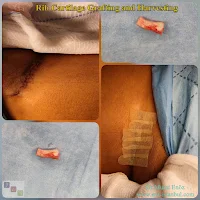





















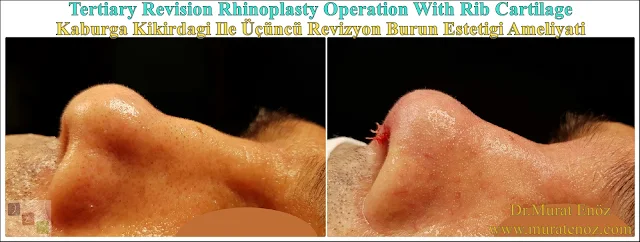









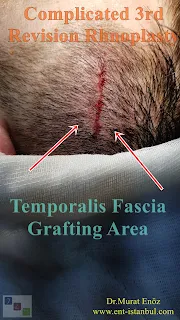
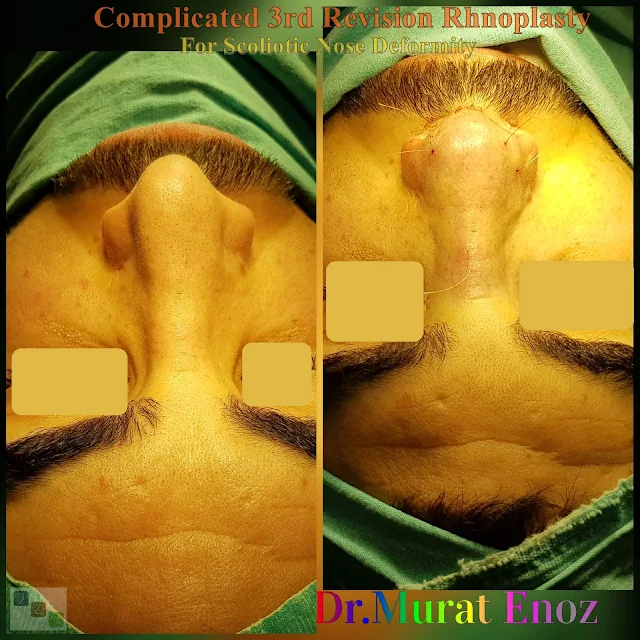

















.JPG)
.JPG)
.JPG)
.JPG)
.JPG)
.JPG)
.JPG)
.JPG)
.JPG)
.JPG)
.JPG)
.JPG)
.JPG)
.JPG)
.JPG)
.JPG)













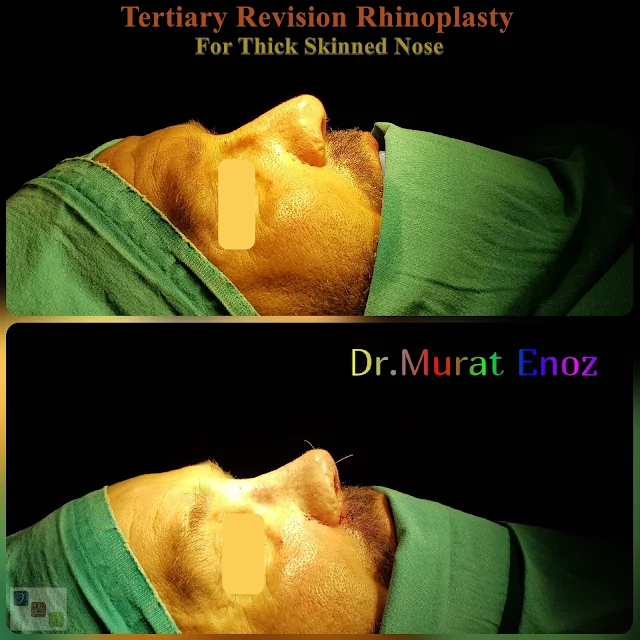








































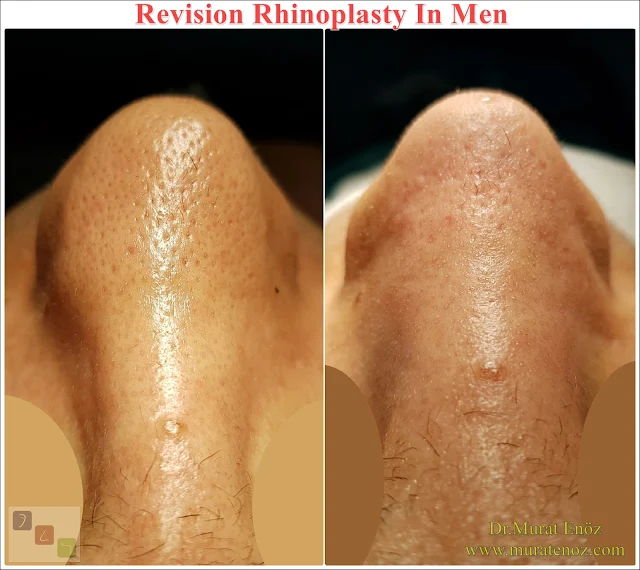






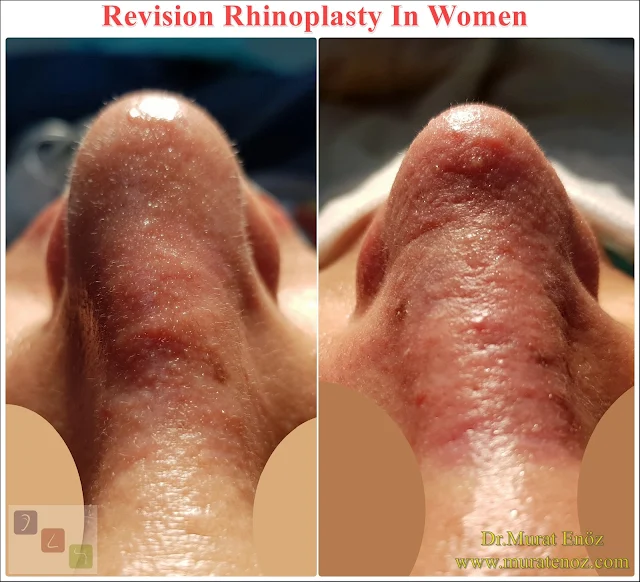




























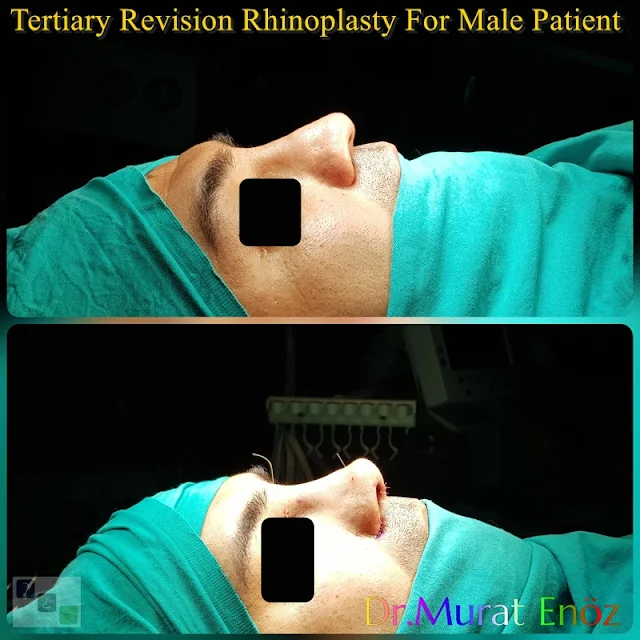



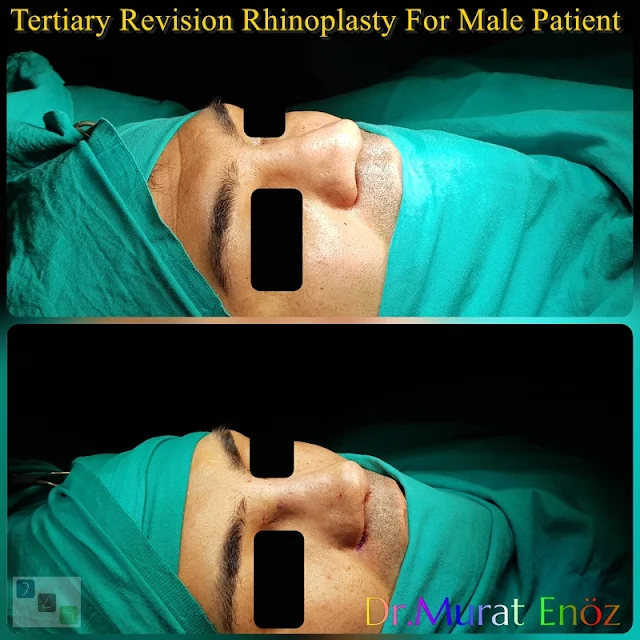



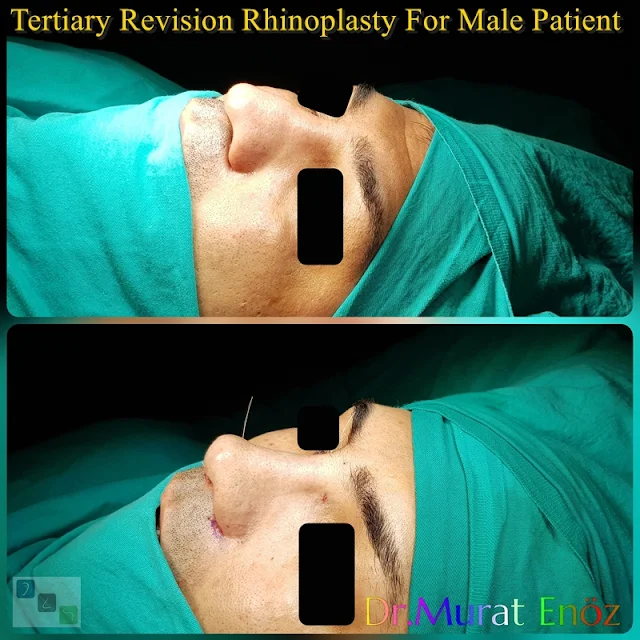




















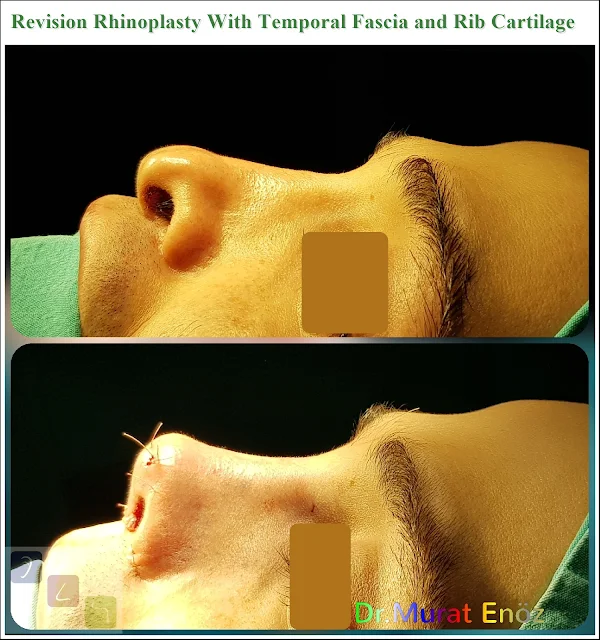




























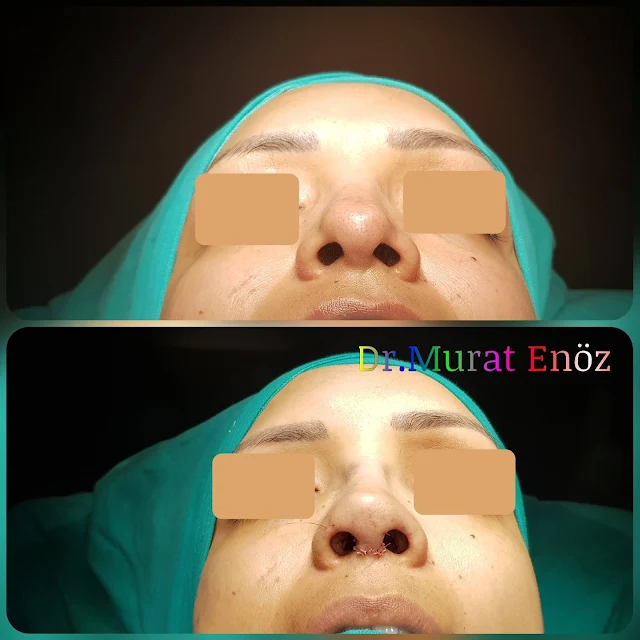






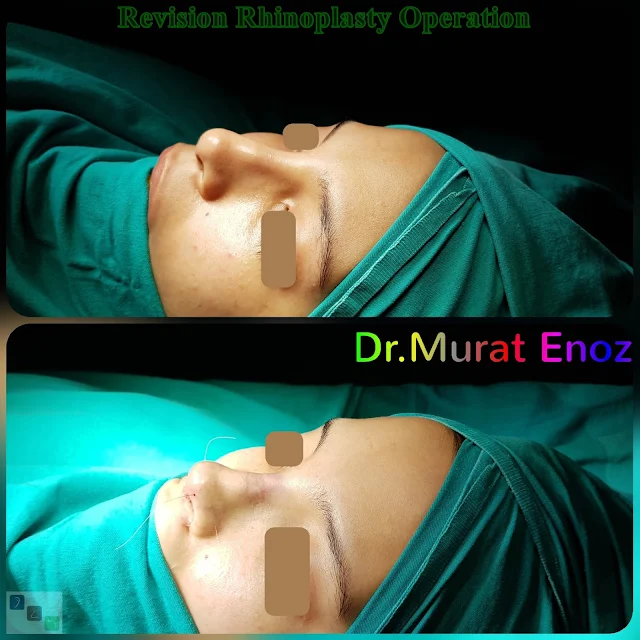
























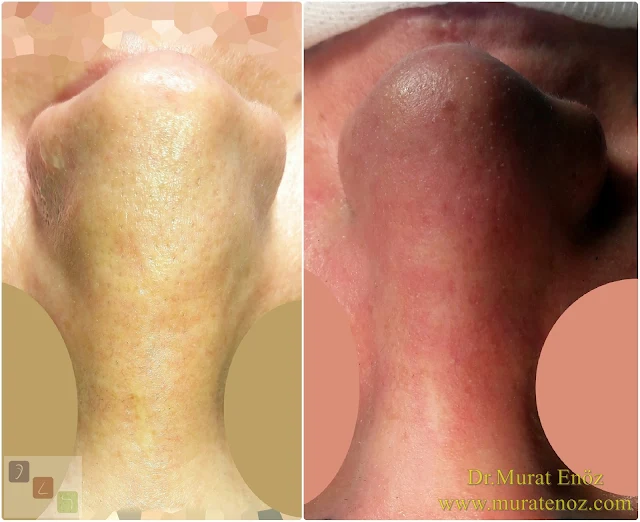
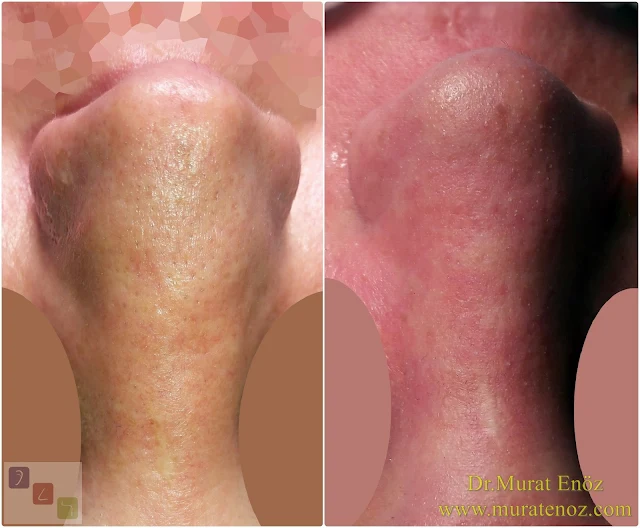







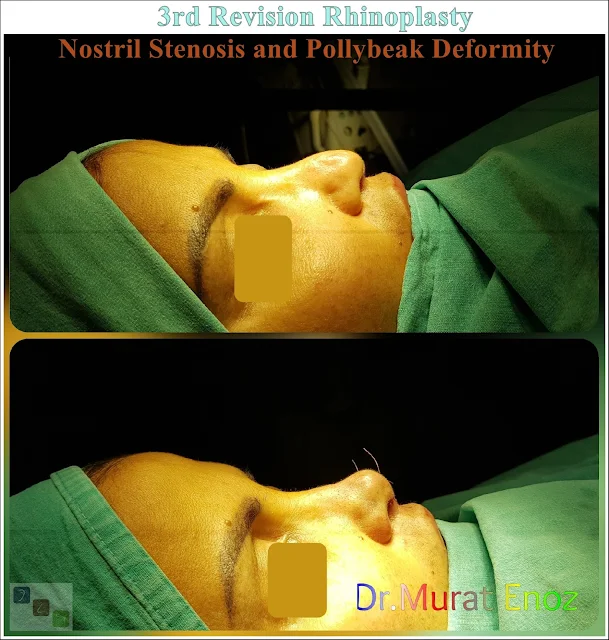
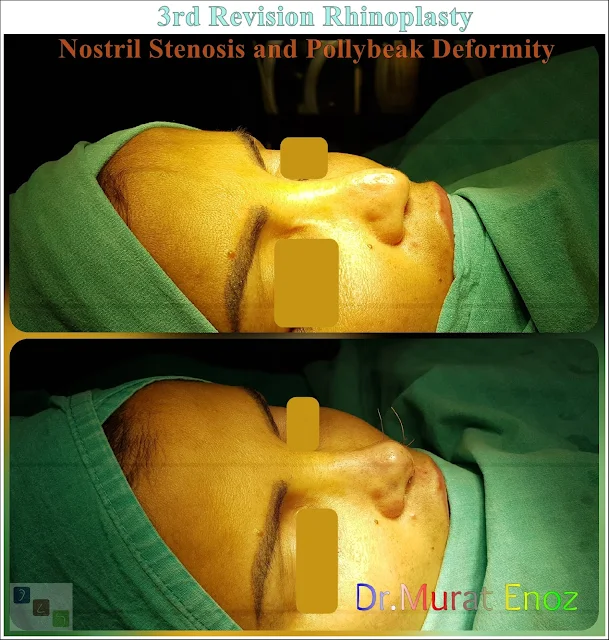












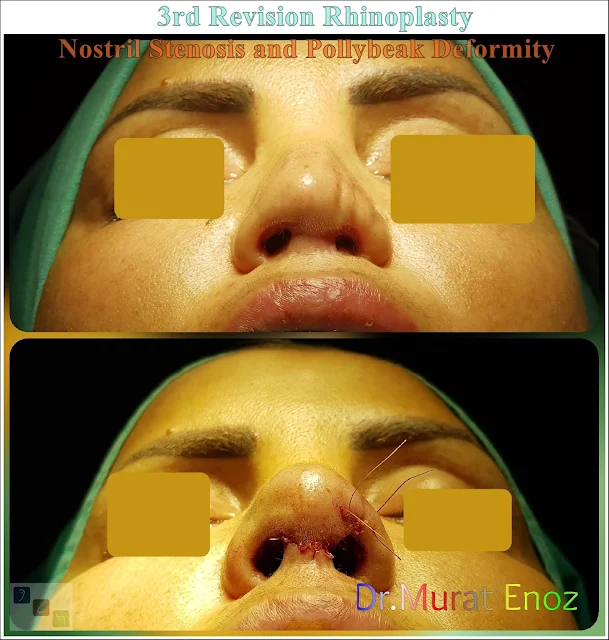


















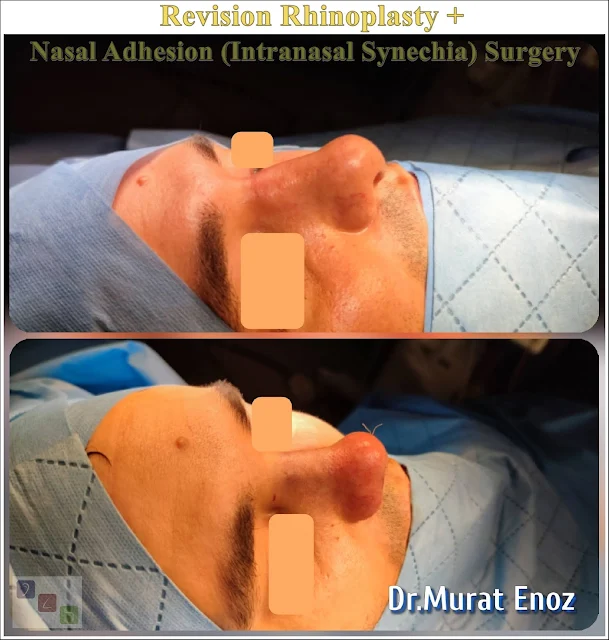












.JPG)
.JPG)
.JPG)
.JPG)
.JPG)
.JPG)
.JPG)
.JPG)
.JPG)







Comments
Post a Comment